Full text
PDF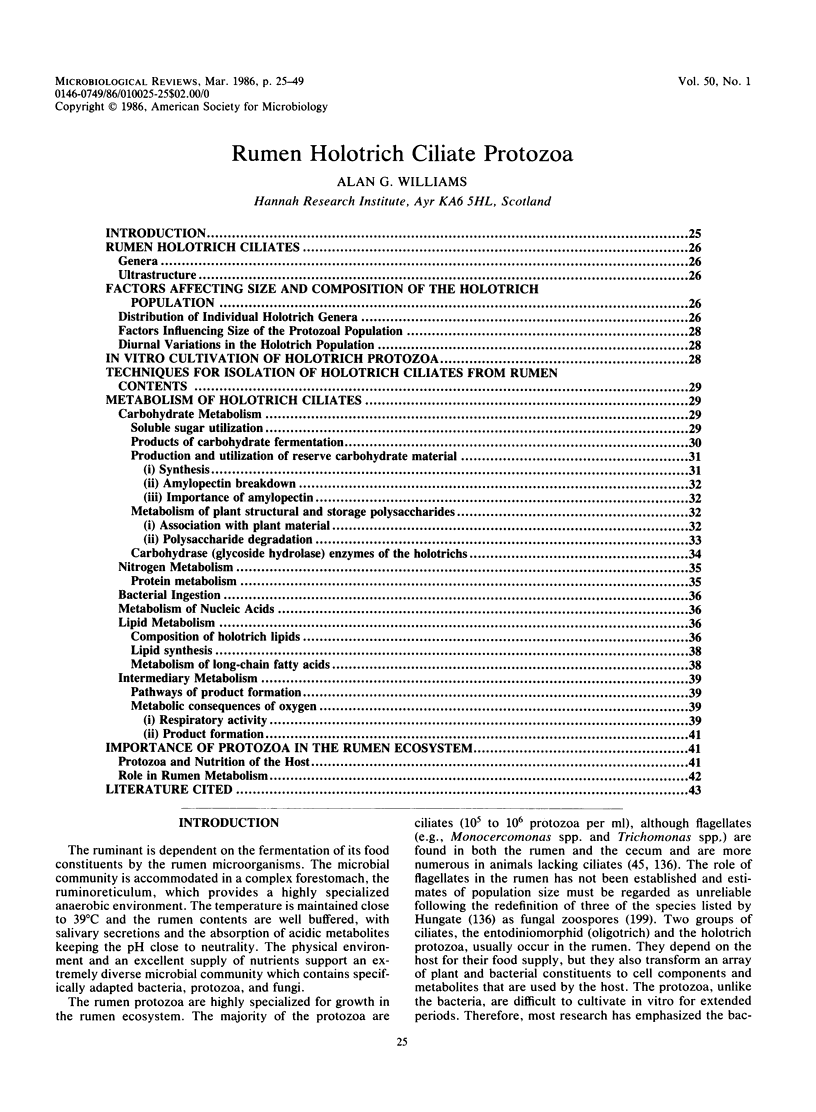
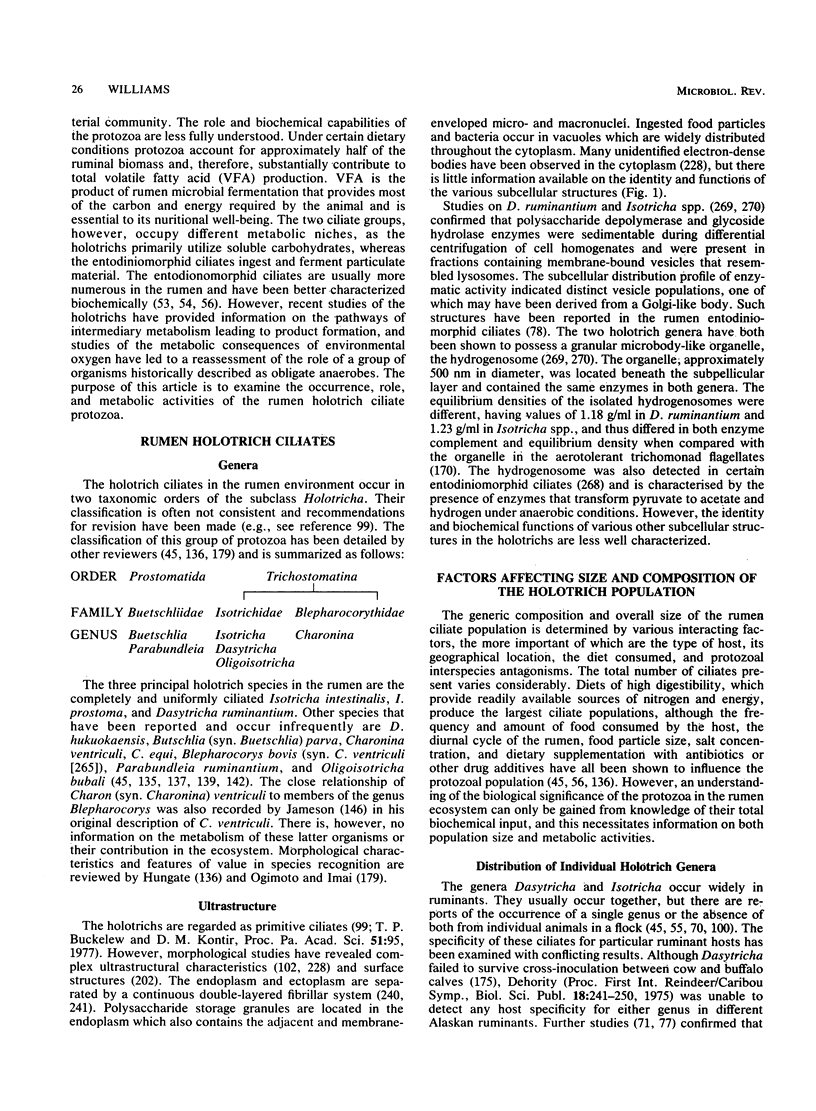
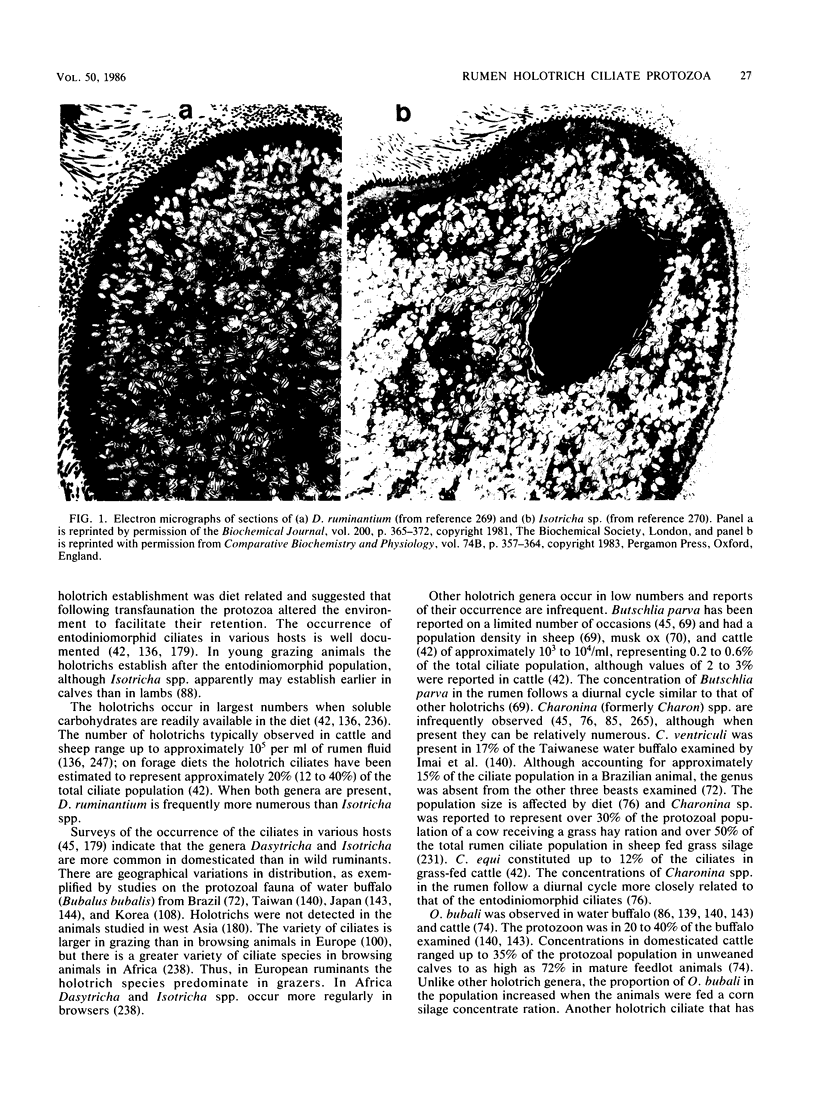
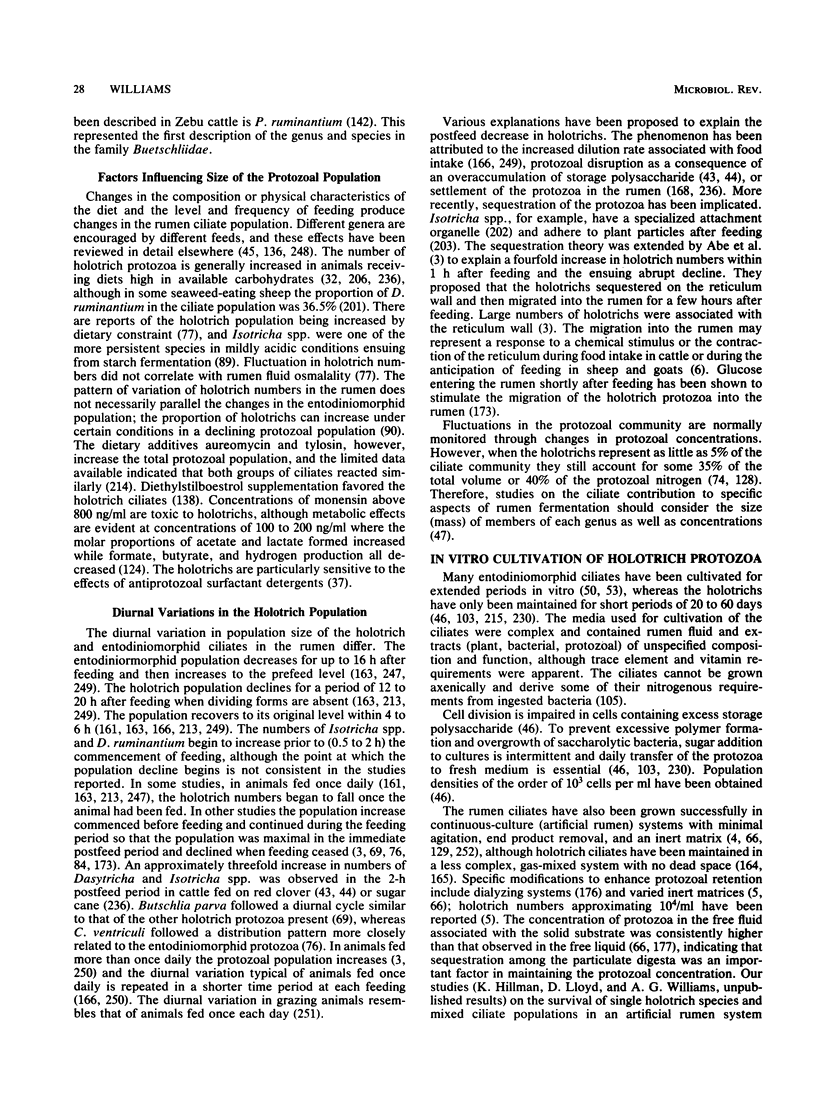
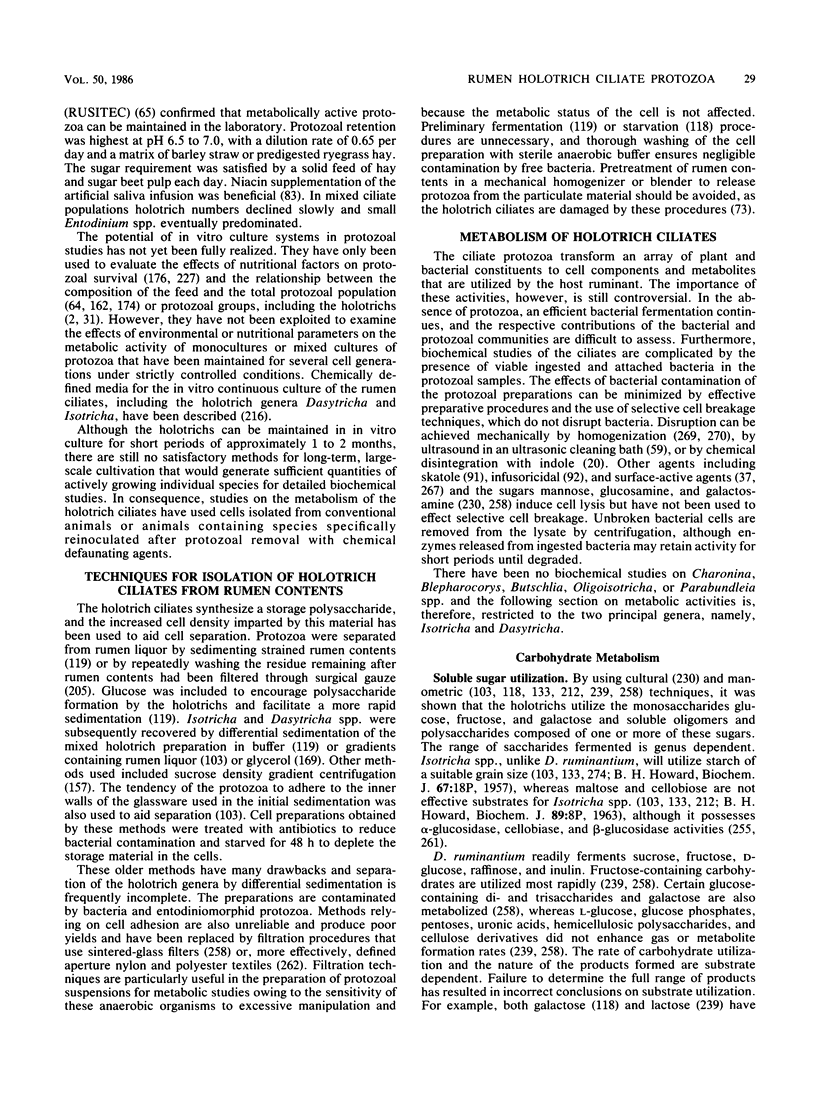
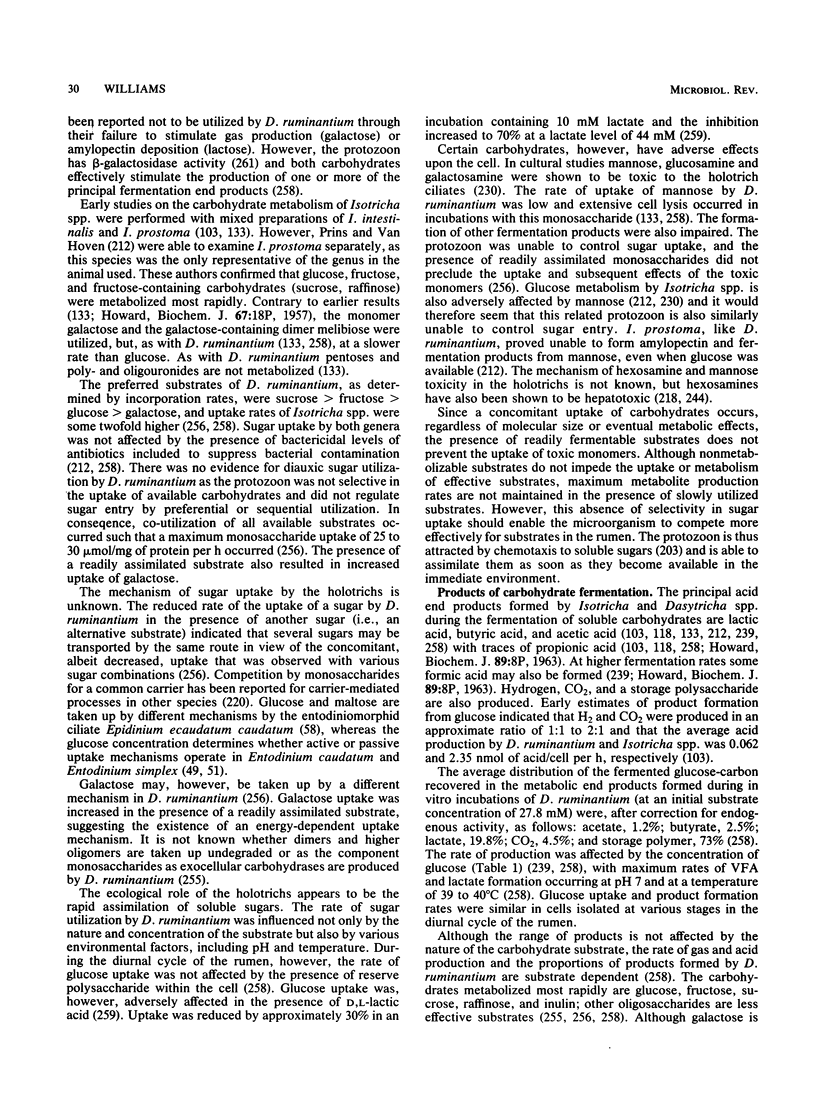
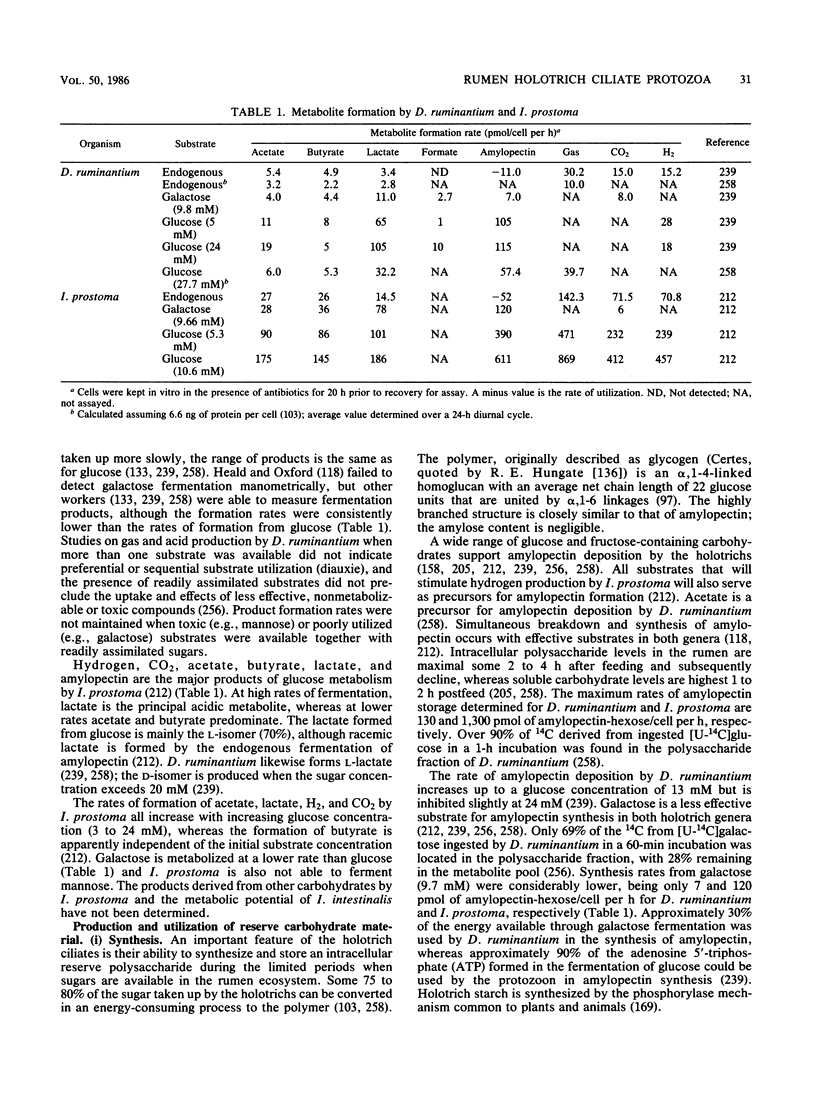
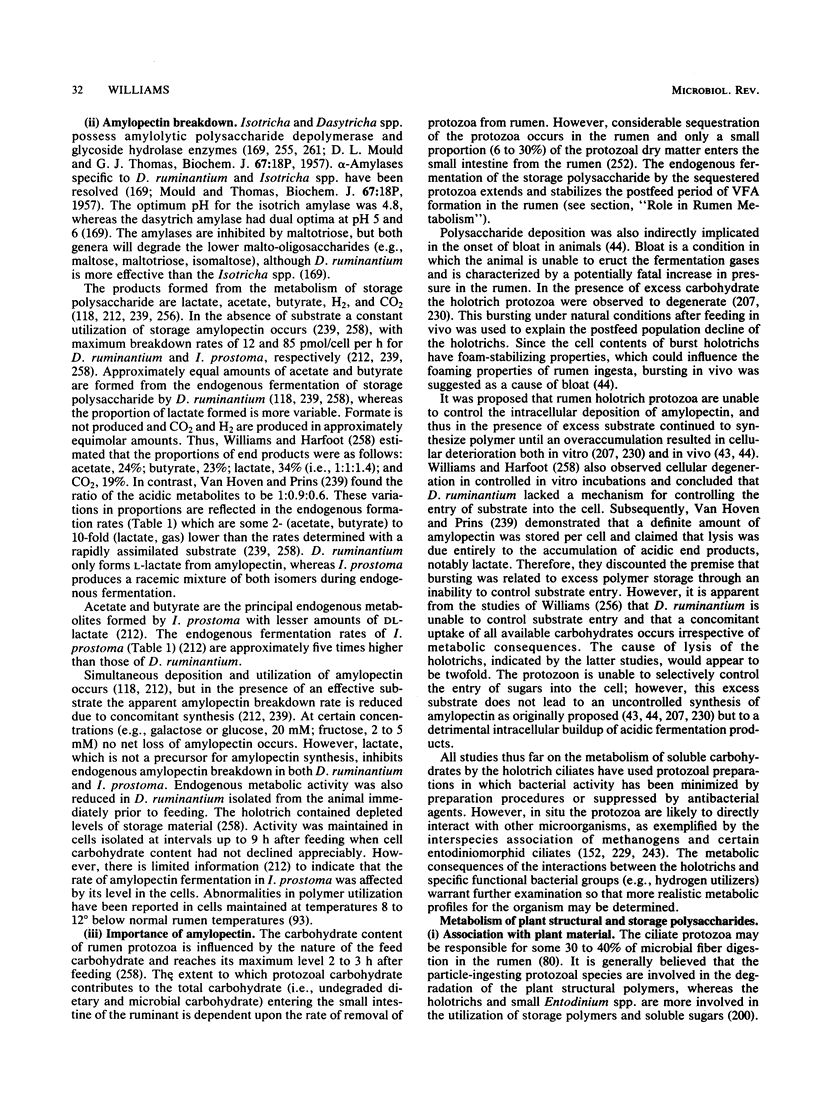
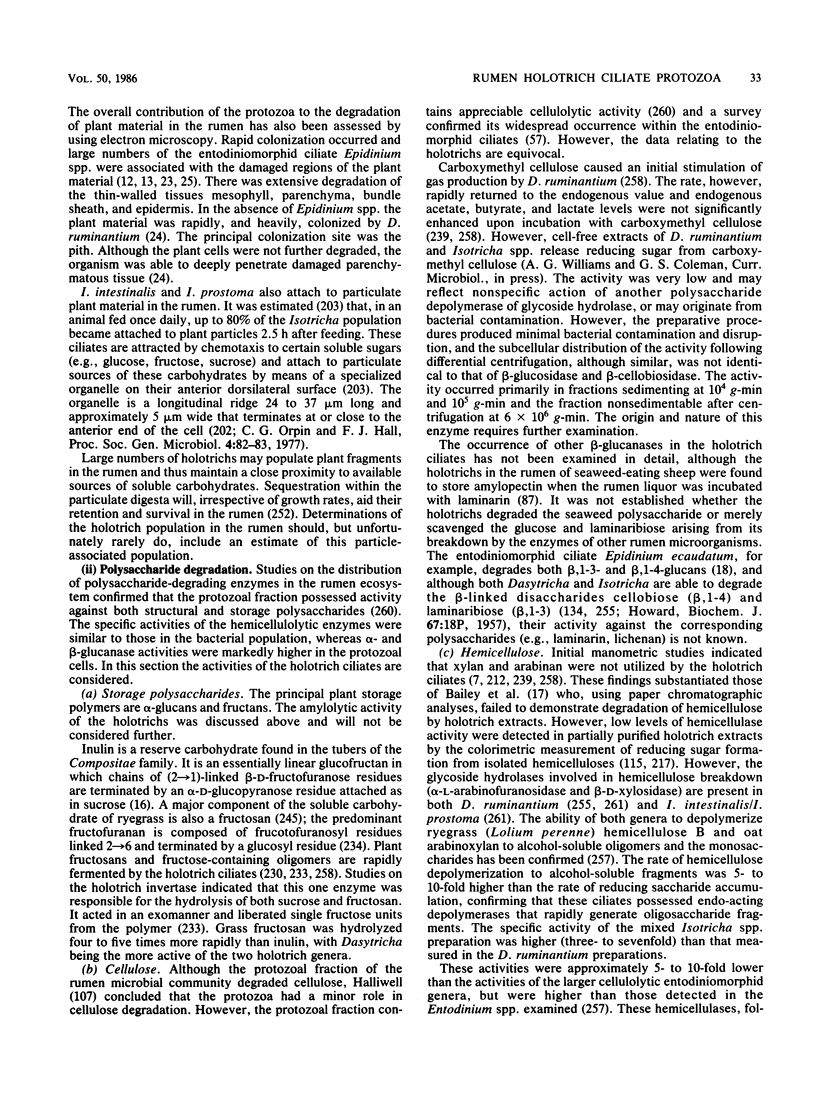
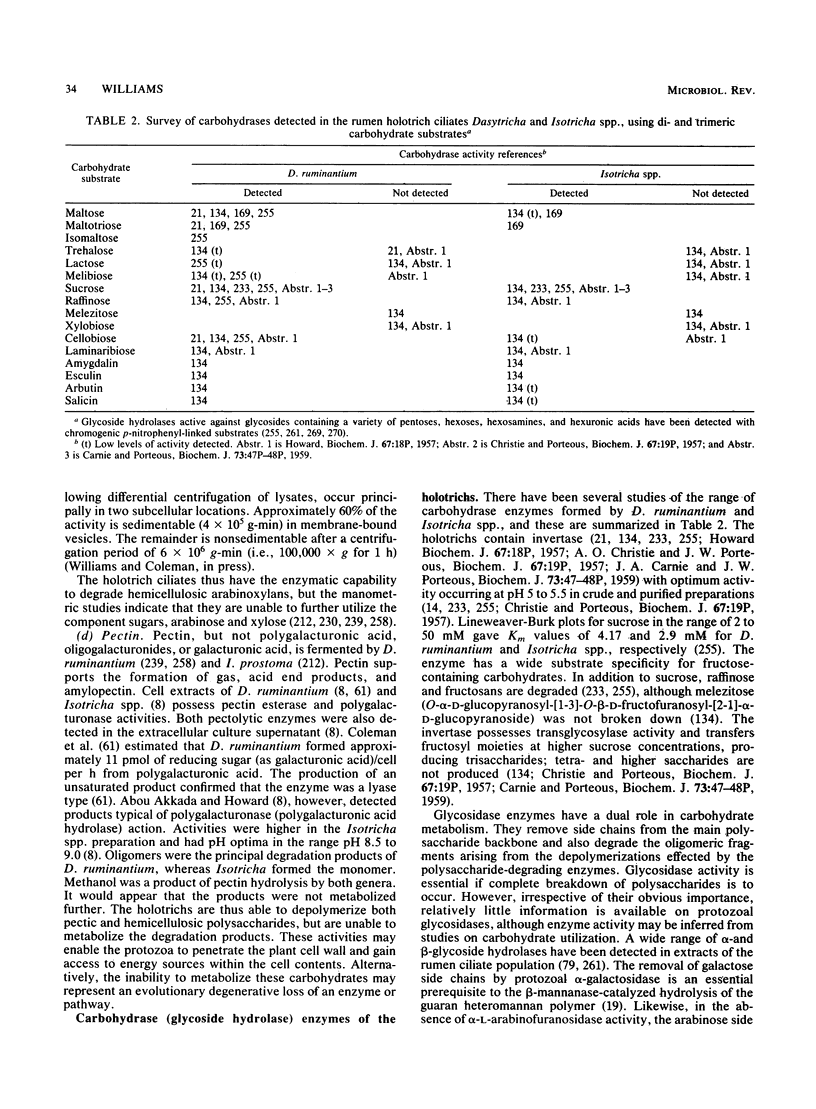
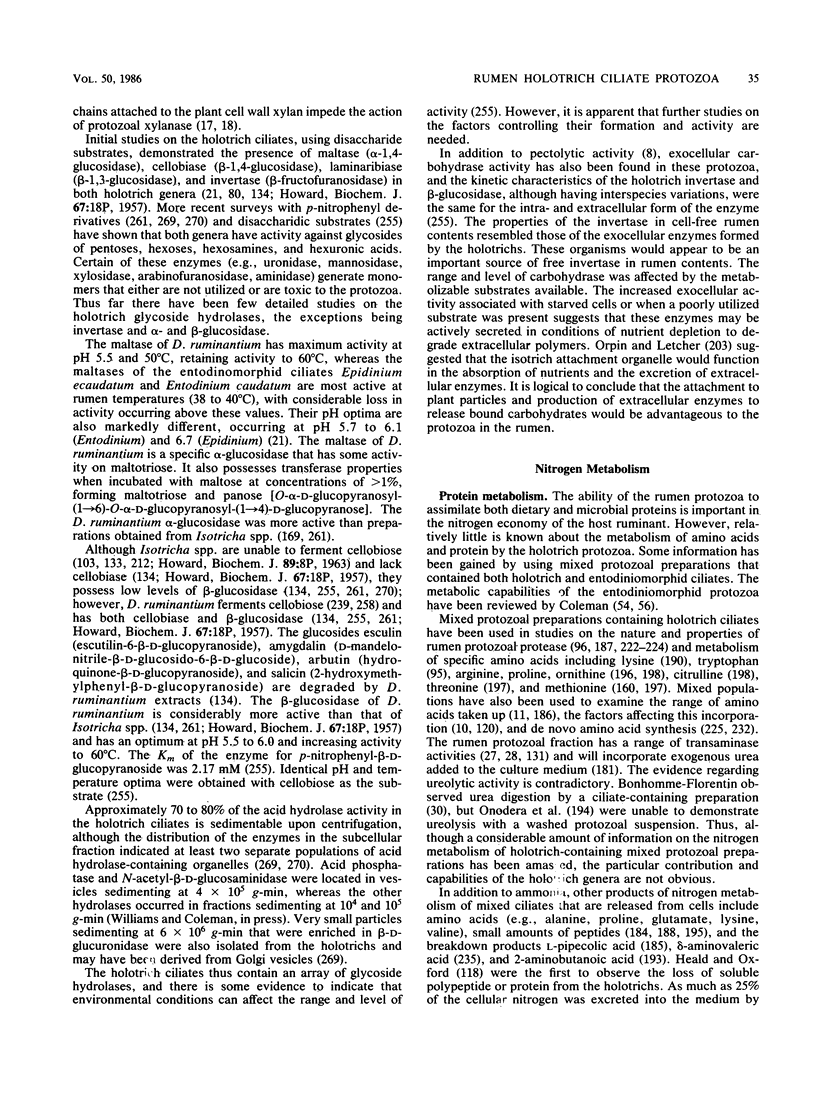
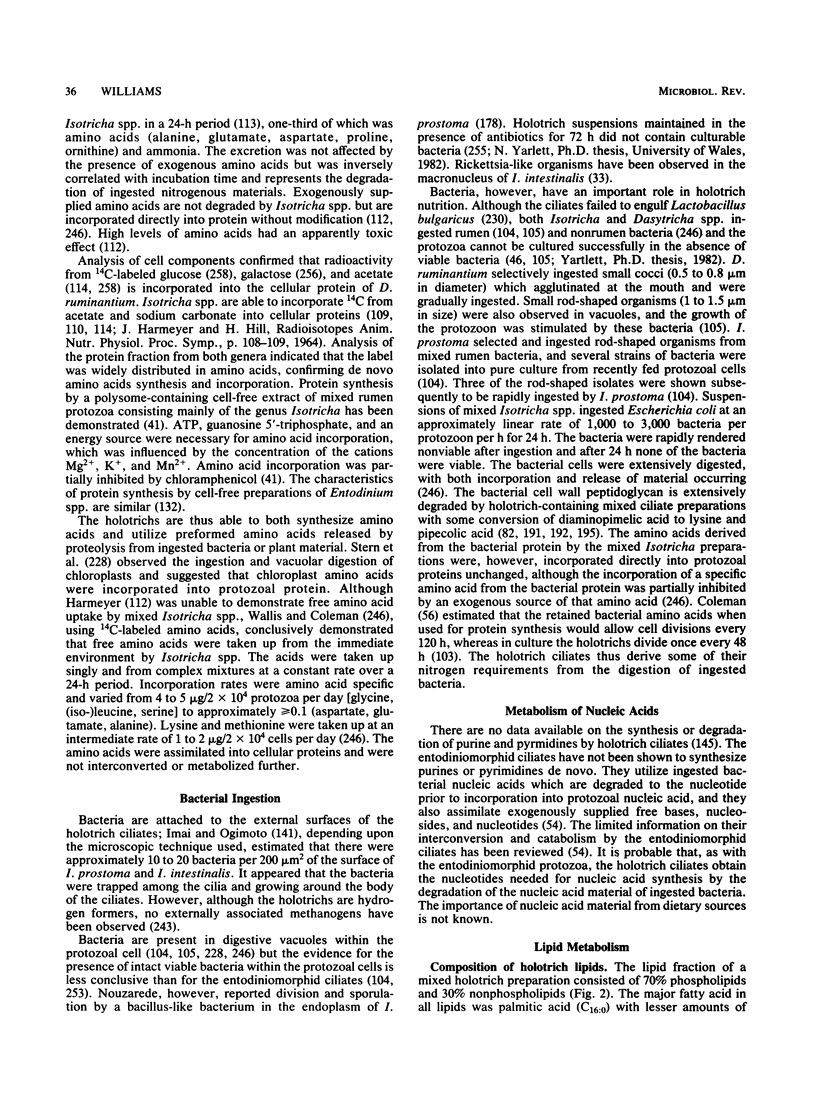
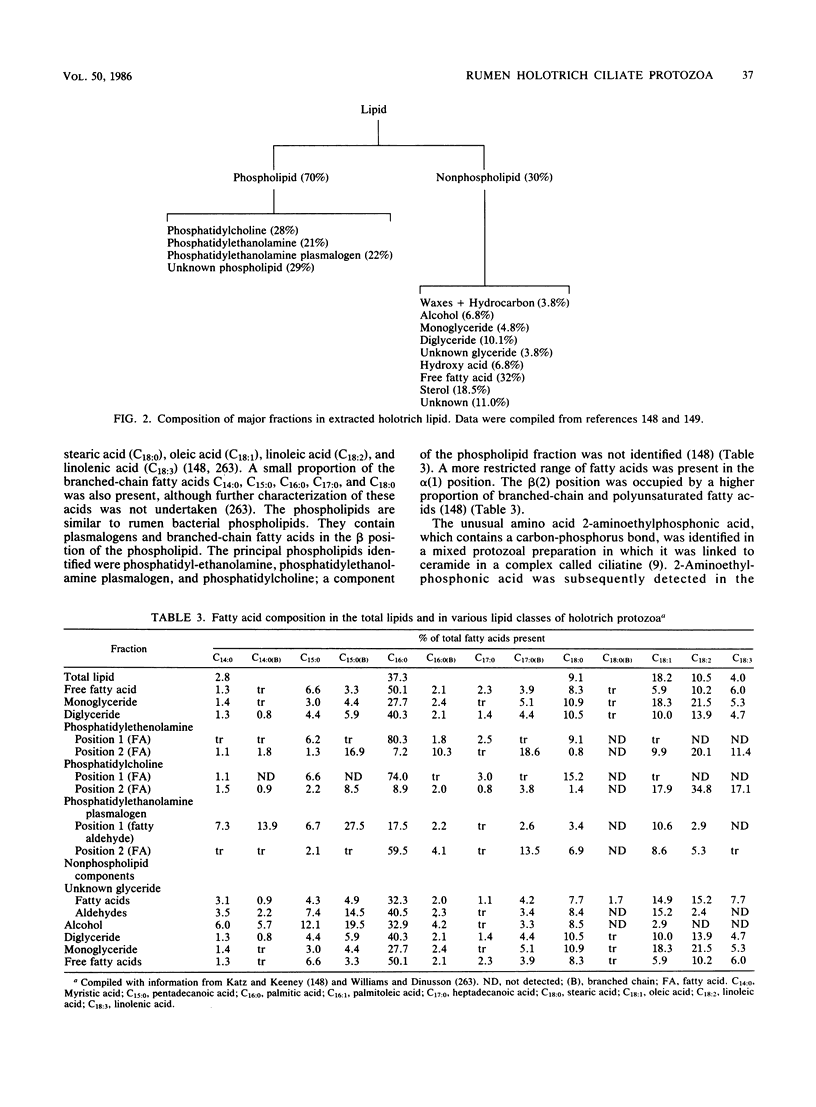
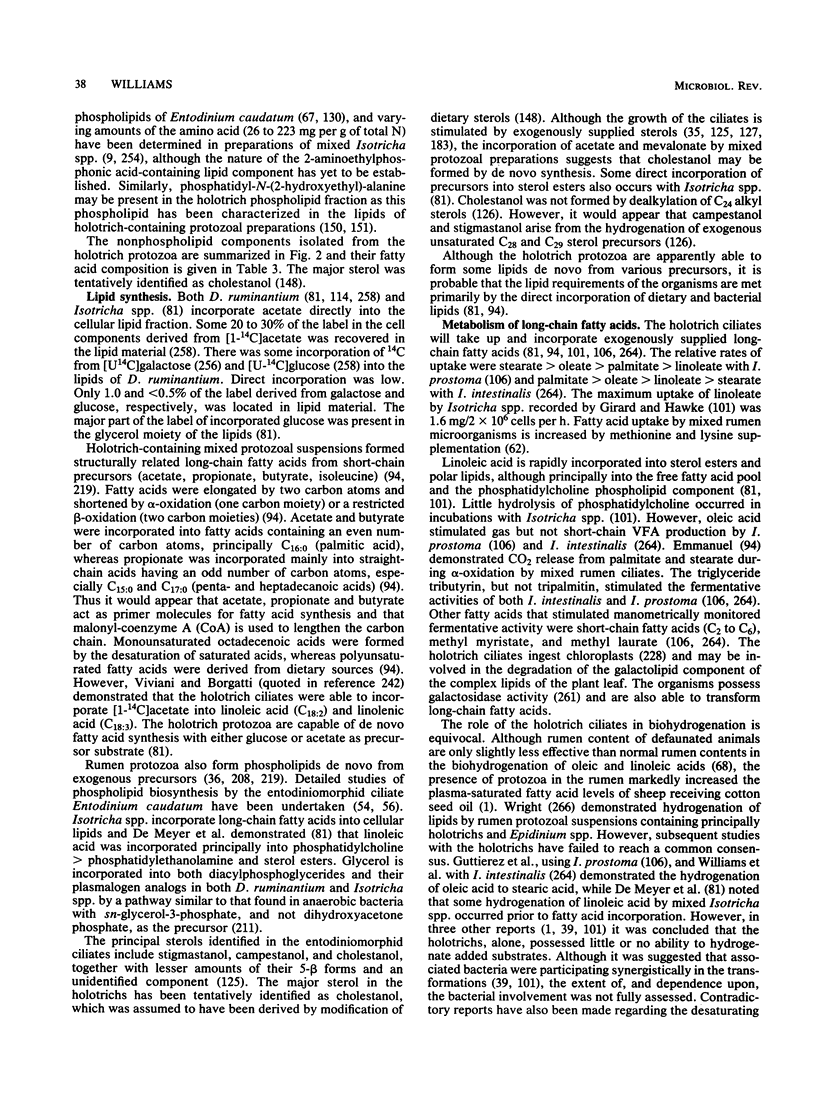
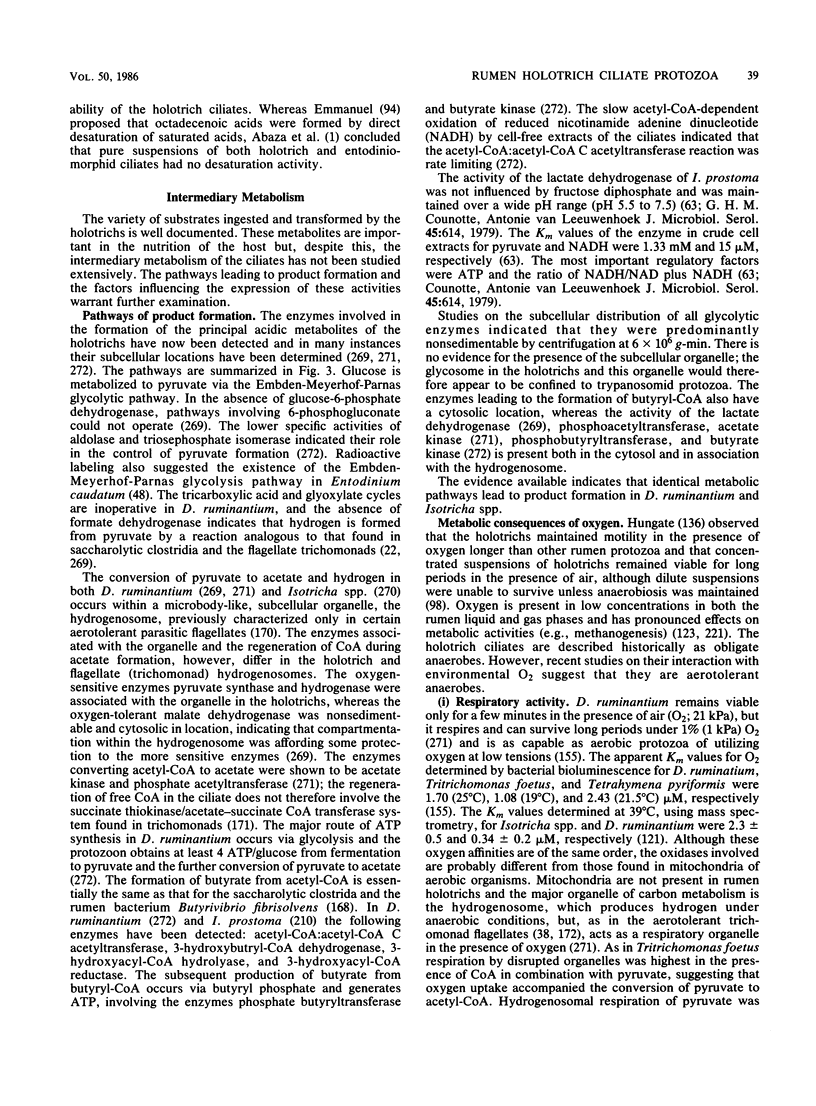
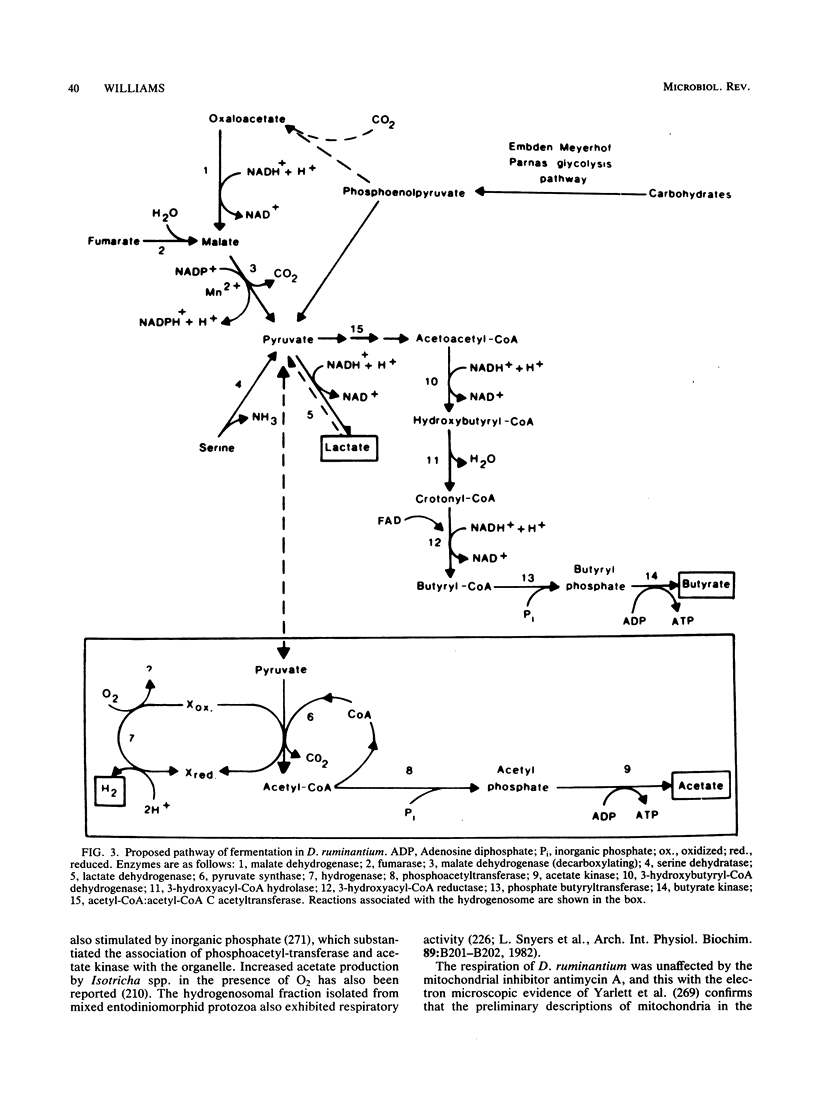
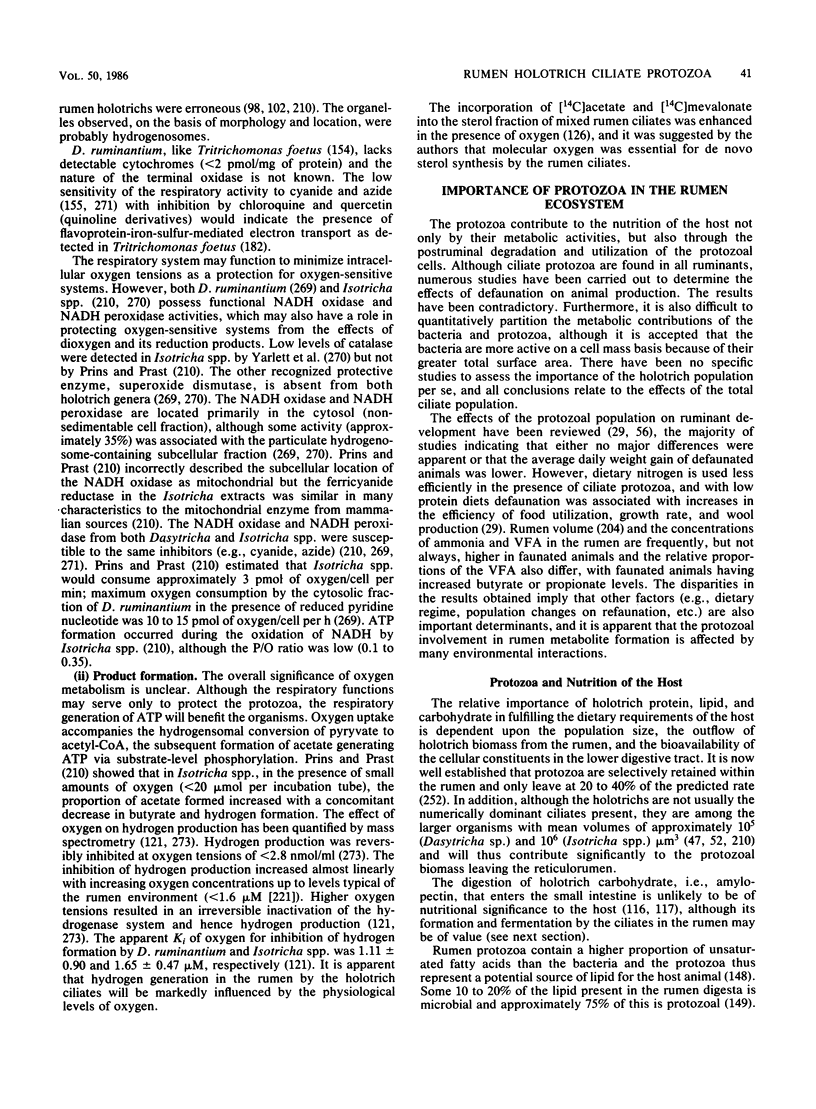
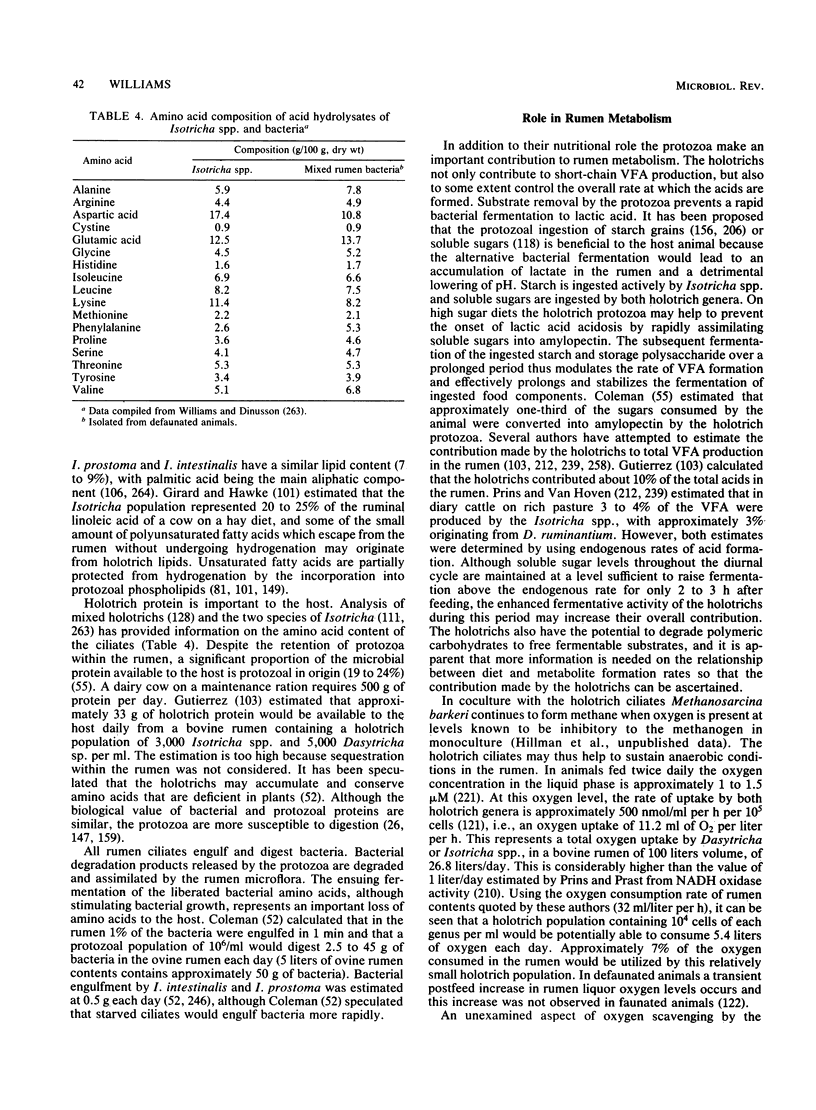
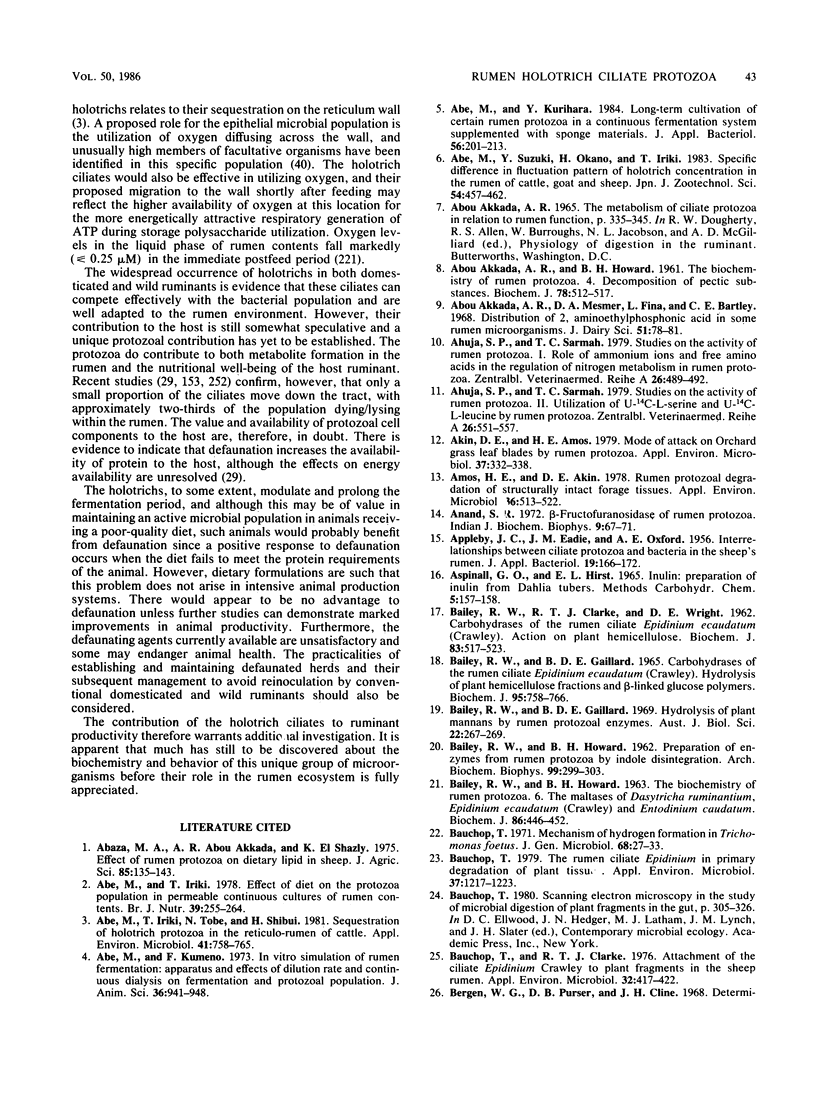
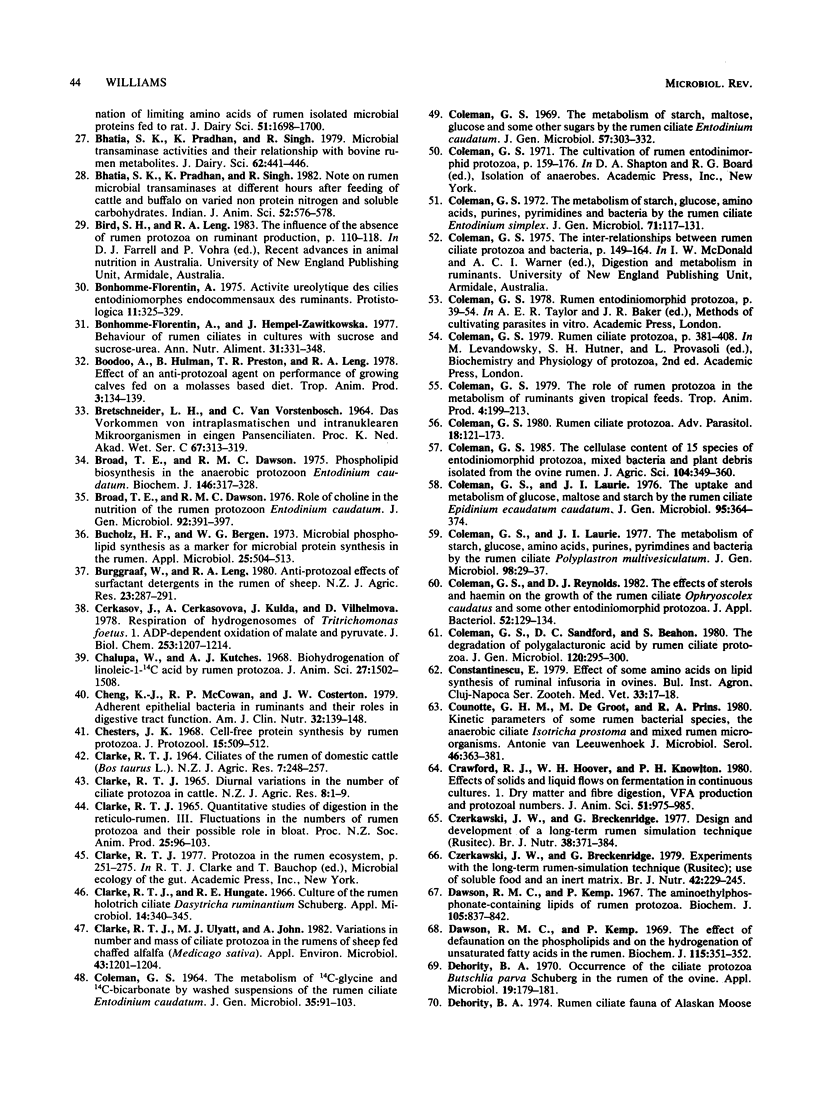
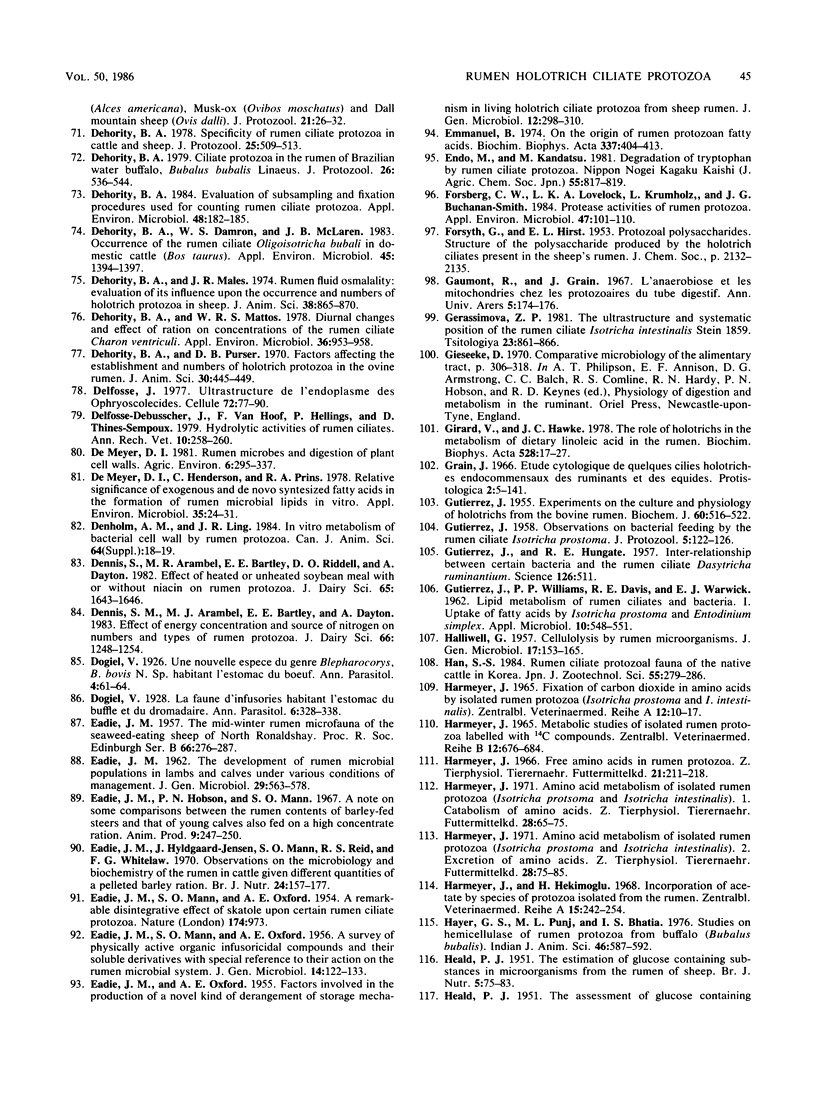
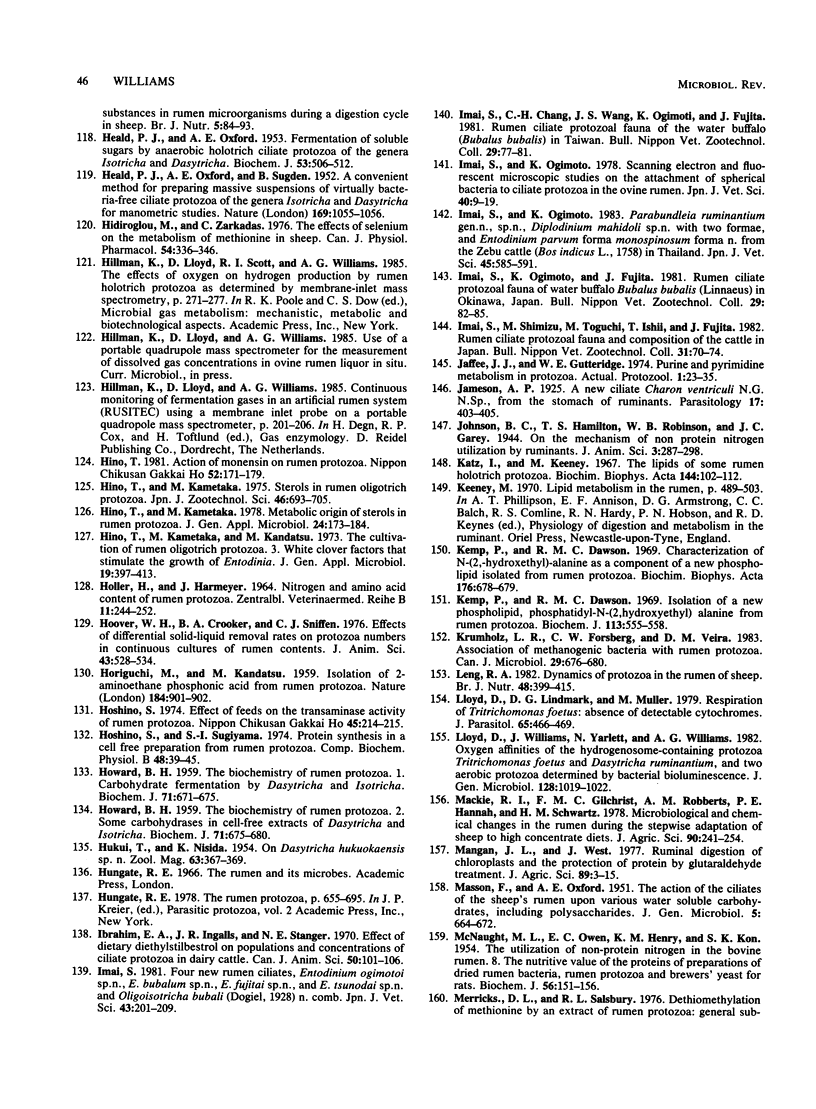
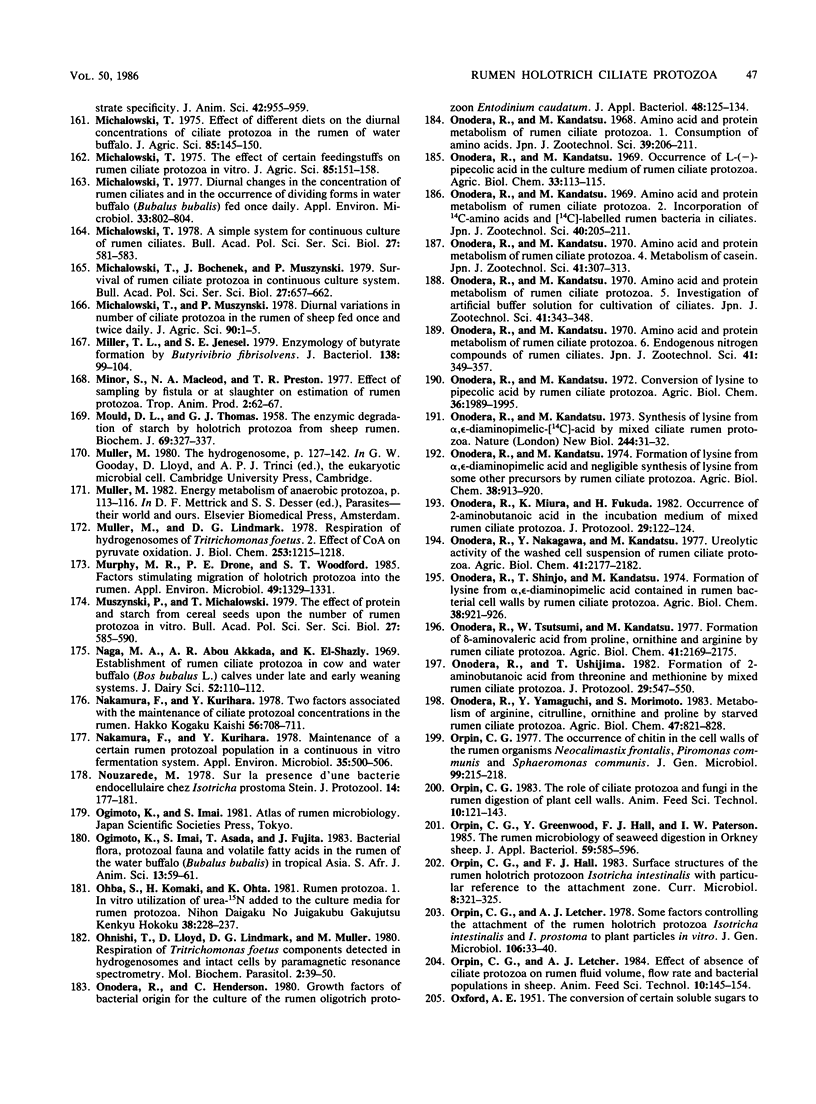
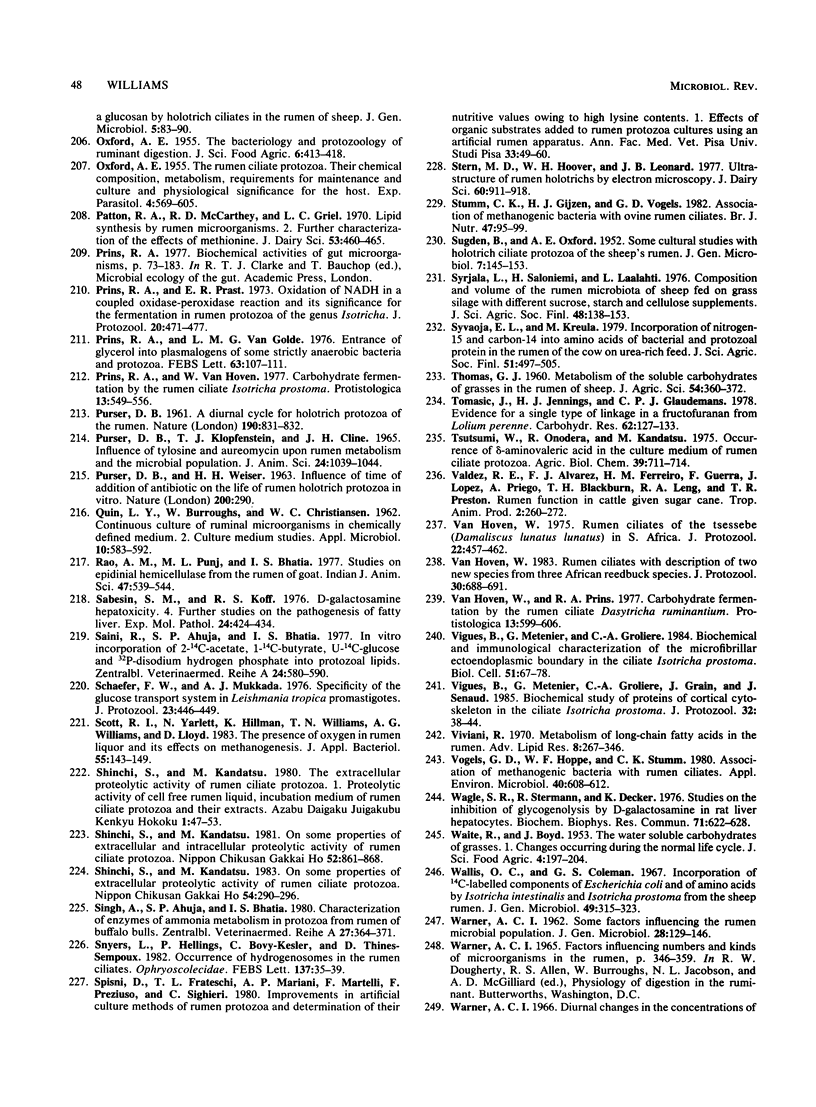
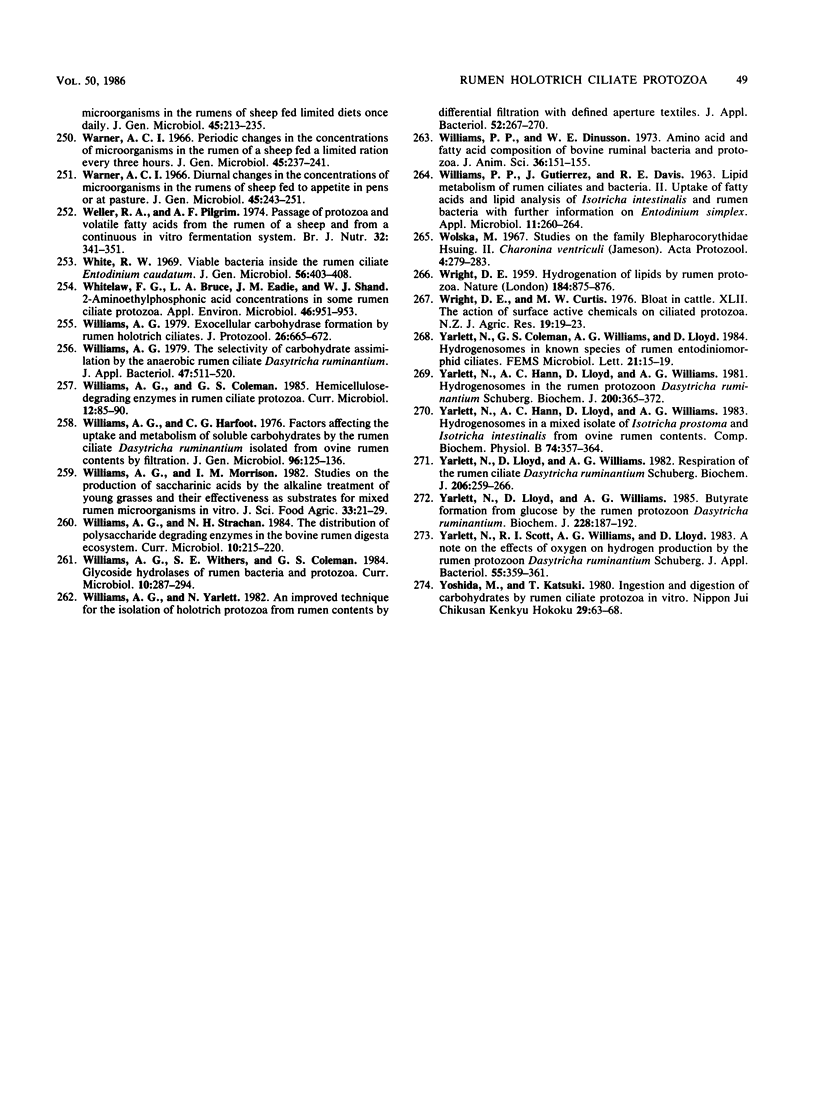
Images in this article
Selected References
These references are in PubMed. This may not be the complete list of references from this article.
- ABOU AKKADA A. R., HOWARD B. H. The biochemistry of rumen protozoa. 4. Decomposition of pectic substances. Biochem J. 1961 Mar;78:512–517. doi: 10.1042/bj0780512. [DOI] [PMC free article] [PubMed] [Google Scholar]
- Abe M., Iriki T. Effects of diet on the protozoa population in permeable continuous cultures of rumen contents. Br J Nutr. 1978 Mar;39(2):255–264. doi: 10.1079/bjn19780035. [DOI] [PubMed] [Google Scholar]
- Abe M., Iriki T., Tobe N., Shibui H. Sequestration of holotrich protozoa in the reticulo-rumen of cattle. Appl Environ Microbiol. 1981 Mar;41(3):758–765. doi: 10.1128/aem.41.3.758-765.1981. [DOI] [PMC free article] [PubMed] [Google Scholar]
- Abe M., Kumeno F. In vitro simulation of rumen fermentation: apparatus and effects of dilution rate and continuous dialysis on fermentation and protozoal population. J Anim Sci. 1973 May;36(5):941–948. doi: 10.2527/jas1973.365941x. [DOI] [PubMed] [Google Scholar]
- Abe M., Kurihara Y. Long-term cultivation of certain rumen protozoa in a continuous fermentation system supplemented with sponge materials. J Appl Bacteriol. 1984 Apr;56(2):201–213. doi: 10.1111/j.1365-2672.1984.tb01340.x. [DOI] [PubMed] [Google Scholar]
- Ahuja S. P., Sarmah T. C. Studies on the activity of rumen protozoa. I. Role of ammonium ions and free amino acids in the regulation of nitrogen metabolism in rumen protozoa. Zentralbl Veterinarmed A. 1979 Aug;26(6):482–492. doi: 10.1111/j.1439-0442.1979.tb01621.x. [DOI] [PubMed] [Google Scholar]
- Ahuja S. P., Sarmah T. C. Studies on the activity of rumen protozoa. II. Utilization of U-14C-L-leucine and U-14C-L-serine by rumen protozoa. Zentralbl Veterinarmed A. 1979 Sep;26(7):551–557. doi: 10.1111/j.1439-0442.1979.tb01631.x. [DOI] [PubMed] [Google Scholar]
- Akin D. E., Amos H. E. Mode of attack on orchardgrass leaf blades by rumen protozoa. Appl Environ Microbiol. 1979 Feb;37(2):332–338. doi: 10.1128/aem.37.2.332-338.1979. [DOI] [PMC free article] [PubMed] [Google Scholar]
- Amos H. E., Akin D. E. Rumen protozoal degradation of structurally intact forage tissues. Appl Environ Microbiol. 1978 Sep;36(3):513–522. doi: 10.1128/aem.36.3.513-522.1978. [DOI] [PMC free article] [PubMed] [Google Scholar]
- Anand S. R. -Fructofuranosidase of rumen protozoa. Indian J Biochem Biophys. 1972 Mar;9(1):67–71. [PubMed] [Google Scholar]
- BAILEY R. W., CLARKE R. T., WRIGHT D. E. Carbohydrases of the rumen ciliate Epidinium ecaudatum (Crawley). Biochem J. 1962 Jun;83:517–523. doi: 10.1042/bj0830517. [DOI] [PMC free article] [PubMed] [Google Scholar]
- BAILEY R. W., GAILLARD B. D. CARBOHYDRASES OF THE RUMEN CILIATE EPIDINIUM ECAUDATUM (CRAWLEY). HYDROLYSIS OF PLANT HEMICELLULOSE FRACTIONS AND BETA-LINKED GLUCOSE POLYMERS. Biochem J. 1965 Jun;95:758–766. doi: 10.1042/bj0950758. [DOI] [PMC free article] [PubMed] [Google Scholar]
- BAILEY R. W., HOWARD B. H. Preparation of enzymes from rumen protozoa by indole disintegration. Arch Biochem Biophys. 1962 Nov;99:299–303. doi: 10.1016/0003-9861(62)90014-0. [DOI] [PubMed] [Google Scholar]
- BAILEY R. W., HOWARD B. H. The biochemistry of rumen protozoa. 6. The maltases of Dasytricha ruminantium, Epidinium ecaudatum (Crawley) and Entodinium caudatum. Biochem J. 1963 Mar;86:446–452. doi: 10.1042/bj0860446. [DOI] [PMC free article] [PubMed] [Google Scholar]
- BRETSCHNEIDER L. H., VANVORSTENBOSCH C. J. DAS VORKOMMEN VON INTRAPLASMATISCHEN UND INTRANUKLEAREN MIKROORGANISMEN IN EINIGEN PANSENCILIATEN. Proc K Ned Akad Wet C. 1964;67:313–319. [PubMed] [Google Scholar]
- Bauchop T., Clarke R. T. Attachment of the ciliate Epidinium Crawley to plant fragments in the sheep rumen. Appl Environ Microbiol. 1976 Sep;32(3):417–422. doi: 10.1128/aem.32.3.417-422.1976. [DOI] [PMC free article] [PubMed] [Google Scholar]
- Bauchop T. Mechanism of hydrogen formation in Trichomonas foetus. J Gen Microbiol. 1971 Sep;68(1):27–33. doi: 10.1099/00221287-68-1-27. [DOI] [PubMed] [Google Scholar]
- Bauchop T. The rumen ciliate epidinium in primary degradation of plant tissues. Appl Environ Microbiol. 1979 Jun;37(6):1217–1223. doi: 10.1128/aem.37.6.1217-1223.1979. [DOI] [PMC free article] [PubMed] [Google Scholar]
- Bergen W. G., Purser D. B., Cline J. H. Determination of limiting amino acids of rumen-isolated microbial proteins fed to rat. J Dairy Sci. 1968 Oct;51(10):1698–1700. doi: 10.3168/jds.S0022-0302(68)87255-8. [DOI] [PubMed] [Google Scholar]
- Bhatia S. K., Pradhan K., Singh R. Microbial transaminase activities and their relationship with bovine rumen metabolites. J Dairy Sci. 1979 Mar;62(3):441–446. doi: 10.3168/jds.S0022-0302(79)83264-6. [DOI] [PubMed] [Google Scholar]
- Bonhomme-Florentin A., Hempel-Zawitkowska J. Comportement des populations ciliaires du rumen en culture dans les milieux saccharose et saccharose-urée. Ann Nutr Aliment. 1977;31(3):331–348. [PubMed] [Google Scholar]
- Broad T. E., Dawson R. M. Phospholipid biosynthesis in the anaerobic protozoon Entodinium caudatum. Biochem J. 1975 Feb;146(2):317–328. doi: 10.1042/bj1460317. [DOI] [PMC free article] [PubMed] [Google Scholar]
- Broad T. E., Dawson R. M. Role of choline in the nutrition of the rumen protozoon Entodinium caudatum. J Gen Microbiol. 1976 Feb;92(2):391–397. doi: 10.1099/00221287-92-2-391. [DOI] [PubMed] [Google Scholar]
- Bucholtz H. F., Bergen W. G. Microbial phospholipid synthesis as a marker for microbial protein synthesis in the rumen. Appl Microbiol. 1973 Apr;25(4):504–513. doi: 10.1128/am.25.4.504-513.1973. [DOI] [PMC free article] [PubMed] [Google Scholar]
- COLEMAN G. S. THE METABOLISM OF 14C-GLYCINE AND 14C-BICARBONATE BY WASHED SUSPENSIONS OF THE RUMEN CILIATE ENTODINIUM CAUDATUM. J Gen Microbiol. 1964 Apr;35:91–103. doi: 10.1099/00221287-35-1-91. [DOI] [PubMed] [Google Scholar]
- Cerkasov J., Cerkasovová A., Kulda J., Vilhelmová D. Respiration of hydrogenosomes of Tritrichomonas foetus. I. ADP-dependent oxidation of malate and pyruvate. J Biol Chem. 1978 Feb 25;253(4):1207–1214. [PubMed] [Google Scholar]
- Cheng K. J., McCowan R. P., Costerton J. W. Adherent epithelial bacteria in ruminants and their roles in digestive tract function. Am J Clin Nutr. 1979 Jan;32(1):139–148. doi: 10.1093/ajcn/32.1.139. [DOI] [PubMed] [Google Scholar]
- Chesters J. K. Cell-free protein synthesis by rumen protozoa. J Protozool. 1968 Aug;15(3):509–512. doi: 10.1111/j.1550-7408.1968.tb02164.x. [DOI] [PubMed] [Google Scholar]
- Clarke R. T., Hungate R. E. Culture of the rumen holotrich ciliate Dasytricha ruminantium schuberg. Appl Microbiol. 1966 May;14(3):340–345. doi: 10.1128/am.14.3.340-345.1966. [DOI] [PMC free article] [PubMed] [Google Scholar]
- Clarke R. T., Ulyatt M. J., John A. Variation in Numbers and Mass of Ciliate Protozoa in the Rumens of Sheep Fed Chaffed Alfalfa (Medicago sativa). Appl Environ Microbiol. 1982 May;43(5):1201–1204. doi: 10.1128/aem.43.5.1201-1204.1982. [DOI] [PMC free article] [PubMed] [Google Scholar]
- Coleman G. S., Laurie J. I. The metabolism of starch, glucose, amino acids, purines, pyrimidines and bacteria by the rumen ciliate Polyplastron multivesiculatum. J Gen Microbiol. 1977 Jan;98(1):29–37. doi: 10.1099/00221287-98-1-29. [DOI] [PubMed] [Google Scholar]
- Coleman G. S., Laurie J. I. The uptake and metabolism of glucose, maltose and starch by the rumen ciliate Epidinium ecaudatum caudatum. J Gen Microbiol. 1976 Aug;96(2):364–374. doi: 10.1099/00221287-95-2-364. [DOI] [PubMed] [Google Scholar]
- Coleman G. S. Rumen ciliate protozoa. Adv Parasitol. 1980;18:121–173. doi: 10.1016/s0065-308x(08)60399-1. [DOI] [PubMed] [Google Scholar]
- Coleman G. S., Sandford D. C., Beahon S. The degradation of polygalacturonic acid by rumen ciliate protozoa. J Gen Microbiol. 1980 Oct;120(2):295–300. doi: 10.1099/00221287-120-2-295. [DOI] [PubMed] [Google Scholar]
- Coleman G. S. The metabolism of starch, glucose, amino acids, purines, pyrimidines and bacteria by the rumen ciliate Entodinium simplex. J Gen Microbiol. 1972 Jun;71(1):117–131. doi: 10.1099/00221287-71-1-117. [DOI] [PubMed] [Google Scholar]
- Coleman G. S. The metabolism of starch, maltose, glucose and some other sugars by the rumen ciliate Entodinium caudatum. J Gen Microbiol. 1969 Aug;57(3):303–332. doi: 10.1099/00221287-57-3-303. [DOI] [PubMed] [Google Scholar]
- Counotte G. H., de Groot M., Prins R. A. Kinetic parameters of lactate dehydrogenases of some rumen bacterial species, the anaerobic ciliate Isotricha prostoma and mixed rumen microorganisms. Antonie Van Leeuwenhoek. 1980;46(4):363–381. doi: 10.1007/BF00421983. [DOI] [PubMed] [Google Scholar]
- Czerkawski J. W., Breckenridge G. Design and development of a long-term rumen simulation technique (Rusitec). Br J Nutr. 1977 Nov;38(3):371–384. doi: 10.1079/bjn19770102. [DOI] [PubMed] [Google Scholar]
- Czerkawski J. W., Breckenridge G. Experiments with the longterm rumen simulation technique (Rusitec); use of soluble food and an inert solid matrix. Br J Nutr. 1979 Sep;42(2):229–245. doi: 10.1079/bjn19790110. [DOI] [PubMed] [Google Scholar]
- Dawson R. M., Kemp P. The aminoethylphosphonate-containing lipids of rumen protozoa. Biochem J. 1967 Nov;105(2):837–842. doi: 10.1042/bj1050837. [DOI] [PMC free article] [PubMed] [Google Scholar]
- Dawson R. M., Kemp P. The effect of defaunation on the phospholipids and on the hydrogenation of unsaturated fatty acids in the rumen. Biochem J. 1969 Nov;115(2):351–352. doi: 10.1042/bj1150351. [DOI] [PMC free article] [PubMed] [Google Scholar]
- Dehority B. A. Ciliate protozoa in the rumen of Brazilian water buffalo, Bubalus bubalis Linnaeus. J Protozool. 1979 Nov;26(4):536–544. doi: 10.1111/j.1550-7408.1979.tb04191.x. [DOI] [PubMed] [Google Scholar]
- Dehority B. A., Damron W. S., McLaren J. B. Occurrence of the Rumen Ciliate Oligoisotricha bubali in Domestic Cattle (Bos taurus). Appl Environ Microbiol. 1983 Apr;45(4):1394–1397. doi: 10.1128/aem.45.4.1394-1397.1983. [DOI] [PMC free article] [PubMed] [Google Scholar]
- Dehority B. A. Evaluation of subsampling and fixation procedures used for counting rumen protozoa. Appl Environ Microbiol. 1984 Jul;48(1):182–185. doi: 10.1128/aem.48.1.182-185.1984. [DOI] [PMC free article] [PubMed] [Google Scholar]
- Dehority B. A., Males J. R. Rumen fluid osmolality: evaluation of its influence upon the occurrence and numbers of holotrich protozoa in sheep. J Anim Sci. 1974 Apr;38(4):865–870. doi: 10.2527/jas1974.384865x. [DOI] [PubMed] [Google Scholar]
- Dehority B. A., Mattos W. R. Diurnal changes and effect of ration on concentrations of the rumen ciliate Charon ventriculi. Appl Environ Microbiol. 1978 Dec;36(6):953–958. doi: 10.1128/aem.36.6.953-958.1978. [DOI] [PMC free article] [PubMed] [Google Scholar]
- Dehority B. A. Occurrence of the ciliate protozoa Bütschlia parva Schuberg in the rumen of the ovine. Appl Microbiol. 1970 Jan;19(1):179–181. doi: 10.1128/am.19.1.179-181.1970. [DOI] [PMC free article] [PubMed] [Google Scholar]
- Dehority B. A., Purser D. B. Factors affecting the establishment and numbers of holotrich protozoa in the ovine rumen. J Anim Sci. 1970 Mar;30(3):445–449. doi: 10.2527/jas1970.303445x. [DOI] [PubMed] [Google Scholar]
- Dehority B. A. Rumen ciliate fauna of Alaskan moose (Alces americana), musk-ox (Ovibos moschatus) and Dall moutain sheep (Ovis dalli). J Protozool. 1974 Feb;21(1):26–32. doi: 10.1111/j.1550-7408.1974.tb03612.x. [DOI] [PubMed] [Google Scholar]
- Delfosse-Debusscher J., Van Hoof F., Hellings P., Thines-Sempoux D. Hydrolytic activities of rumen ciliates. Ann Rech Vet. 1979;10(2-3):258–260. [PubMed] [Google Scholar]
- Delfosse J. Ultrastucture de l'endoplasme des ophryoscolescides. Cellule. 1977;72(1-2):75–90. [PubMed] [Google Scholar]
- Demeyer D. I., Henderson C., Prins R. A. Relative significance of exogenous and de novo synthesized fatty acids in the formation of rumen microbial lipids in vitro. Appl Environ Microbiol. 1978 Jan;35(1):24–31. doi: 10.1128/aem.35.1.24-31.1978. [DOI] [PMC free article] [PubMed] [Google Scholar]
- Dennis S. M., Arambel M. J., Bartley E. E., Dayton A. D. Effect of energy concentration and source of nitrogen on numbers and types of rumen protozoa. J Dairy Sci. 1983 Jun;66(6):1248–1254. doi: 10.3168/jds.S0022-0302(83)81931-6. [DOI] [PubMed] [Google Scholar]
- EADIE J. M., MANN S. O., OXFORD A. E. A survey of physically active organic infusoricidal compounds and their soluble derivatives with special reference to their action on the rumen microbial system. J Gen Microbiol. 1956 Feb;14(1):122–133. doi: 10.1099/00221287-14-1-122. [DOI] [PubMed] [Google Scholar]
- EADIE J. M., OXFORD A. E. A remarkable disintegrative effect of skatole upon certain rumen ciliate protozoa. Nature. 1954 Nov 20;174(4438):973–973. doi: 10.1038/174973a0. [DOI] [PubMed] [Google Scholar]
- EADIE J. M., OXFORD A. E. Factors involved in the production of a novel kind of derangement of storage mechanism in living holotrich ciliate protozoa from sheep rumen. J Gen Microbiol. 1955 Apr;12(2):298–310. doi: 10.1099/00221287-12-2-298. [DOI] [PubMed] [Google Scholar]
- Eadie J. M., Hyldgaard-Jensen J., Mann S. O., Reid R. S., Whitelaw F. G. Observations on the microbiology and biochemistry of the rumen in cattle given different quantities of a pelleted barley ration. Br J Nutr. 1970 Mar;24(1):157–177. doi: 10.1079/bjn19700018. [DOI] [PubMed] [Google Scholar]
- Emmanuel B. On the origin of rumen protozoan fatty acids. Biochim Biophys Acta. 1974 Mar 28;337(3):404–413. doi: 10.1016/0005-2760(74)90116-7. [DOI] [PubMed] [Google Scholar]
- Forsberg C. W., Lovelock L. K., Krumholz L., Buchanan-Smith J. G. Protease activities of rumen protozoa. Appl Environ Microbiol. 1984 Jan;47(1):101–110. doi: 10.1128/aem.47.1.101-110.1984. [DOI] [PMC free article] [PubMed] [Google Scholar]
- GUTIERREZ J. Experiments on the culture and physiology of holotriches from the bovine rumen. Biochem J. 1955 Jul;60(3):516–522. doi: 10.1042/bj0600516. [DOI] [PMC free article] [PubMed] [Google Scholar]
- GUTIERREZ J., HUNGATE R. E. Interrelationship between certain bacteria and the rumen ciliate Dasytricha ruminantium. Science. 1957 Sep 13;126(3272):511–511. doi: 10.1126/science.126.3272.511. [DOI] [PubMed] [Google Scholar]
- GUTIERREZ J., WILLIAMS P. P., DAVIS R. E., WARWICK E. J. Lipid metabolism of rumen ciliates and bacteria. I. Uptake of fatty acids by Isotricha prostoma and Entodinium simplex. Appl Microbiol. 1962 Nov;10:548–551. doi: 10.1128/am.10.6.548-551.1962. [DOI] [PMC free article] [PubMed] [Google Scholar]
- Girard V., Hawke J. C. The role of holotrichs in the metabolism of dietary linoleic acid in the rumen. Biochim Biophys Acta. 1978 Jan 27;528(1):17–27. doi: 10.1016/0005-2760(78)90048-6. [DOI] [PubMed] [Google Scholar]
- Günther R., Müller W. Technik und Erfolgsbewertung der intraarteriellen Chemotherapie von Plattenepithelkarzinomen. Arch Geschwulstforsch. 1982;52(2):113–116. [PubMed] [Google Scholar]
- HALLIWELL G. Cellulolysis by rumen micro-organisms. J Gen Microbiol. 1957 Aug;17(1):153–165. doi: 10.1099/00221287-17-1-153. [DOI] [PubMed] [Google Scholar]
- HEALD P. J., OXFORD A. E. Fermentation of soluble sugars by anaerobic holotrich ciliate protozoa of the genera Isotricha and Dasytricha. Biochem J. 1953 Feb;53(3):506–512. doi: 10.1042/bj0530506. [DOI] [PMC free article] [PubMed] [Google Scholar]
- HEALD P. J., OXFORD A. E., SUGDEN B. A convenient method for preparing massive suspensions of virtually bacteria-free ciliate protozoa of the genera Isotricha and Dasytricha for manometric studies. Nature. 1952 Jun 21;169(4312):1055–1056. doi: 10.1038/1691055a0. [DOI] [PubMed] [Google Scholar]
- HEALD P. J. The assessment of glucose-containing substances in rumen microorganisms during a digestion cycle in sheep. Br J Nutr. 1951;5(1):84–93. doi: 10.1079/bjn19510010. [DOI] [PubMed] [Google Scholar]
- HEALD P. J. The estimation of glucose-containing substances in micro-organisms from the rumen of the sheep. Br J Nutr. 1951;5(1):75–83. doi: 10.1079/bjn19510009. [DOI] [PubMed] [Google Scholar]
- HORIGUCHI M., KANDATSU M. Isolation of 2-aminoethane phosphonic acid from rumen protozoa. Nature. 1959 Sep 19;184(Suppl 12):901–902. doi: 10.1038/184901b0. [DOI] [PubMed] [Google Scholar]
- HOWARD B. H. The biochemistry of rumen protozoa. 1. Carbohydrate fermentation by Dasytricha and Isotricha. Biochem J. 1959 Apr;71(4):671–675. doi: 10.1042/bj0710671. [DOI] [PMC free article] [PubMed] [Google Scholar]
- HOWARD B. H. The biochemistry of rumen protozoa. 2. Some carbohydrases in cell-free extracts of Dasytricha and Isotricha. Biochem J. 1959 Apr;71(4):675–680. doi: 10.1042/bj0710675. [DOI] [PMC free article] [PubMed] [Google Scholar]
- Harmeyer J. Der Aminosäurenstoffwechsel isolierter Pansenprotozoenarten (Isotricha prostoma und I. intestinalis). 2. Exkretion von Aminosäuren. Z Tierphysiol Tierernahr Futtermittelkd. 1971 Sep;28(2):75–85. [PubMed] [Google Scholar]
- Harmeyer J. Der Aminosäurentoffwechsel isolierter Pansenprotozoenarten (Isotricha prostoma und I. intestinalis). 1. Untersuchungen über den Abbau von Aminosäuren. Z Tierphysiol Tierernahr Futtermittelkd. 1971 Sep;28(2):65–75. [PubMed] [Google Scholar]
- Harmeyer J. Freie Aminosäuren in Pansenprotozoen. Z Tierphysiol Tierernahr Futtermittelkd. 1966 Jul;21(4):211–218. [PubMed] [Google Scholar]
- Harmeyer J., Hekimoglu H. Acetatinkorporation durch isolierte Pansenprotozoenarten. Zentralbl Veterinarmed A. 1968 May;15(3):242–254. [PubMed] [Google Scholar]
- Harmeyer J. Stoffwechseluntersuchungen an isolierten Pansenprotozoenarten mit 14C-markierten Verbindungen. Zentralbl Veterinarmed B. 1965 Dec;12(7):676–684. [PubMed] [Google Scholar]
- Hidiroglou M., Zarkadas C. G. The effects of selenium on the metabolism of methionine in sheep. Can J Physiol Pharmacol. 1976 Jun;54(3):336–346. doi: 10.1139/y76-048. [DOI] [PubMed] [Google Scholar]
- Hino Y., Minakami S., Murakami H. The comparison of Golgi subfractions isolated from mitochondrial fraction with those from microsomal fraction. Exp Cell Res. 1981 May;133(1):171–179. doi: 10.1016/0014-4827(81)90367-0. [DOI] [PubMed] [Google Scholar]
- Hoshino S., Sugiyama S. Protein synthesis in a cell-free preparation from rumen Protozoa. Comp Biochem Physiol B. 1974 May 15;48(1):39–45. doi: 10.1016/0305-0491(74)90040-6. [DOI] [PubMed] [Google Scholar]
- Imai S. Four new rumen ciliates, Entodinium ogimotoi sp. n., E. bubalum sp.n., E. fujitai sp. n. and E. tsunodai sp. n. and Oligoisotricha bubali (Dogiel, 1928) n. comb. Nihon Juigaku Zasshi. 1981 Apr;43(2):201–209. doi: 10.1292/jvms1939.43.201. [DOI] [PubMed] [Google Scholar]
- Imai S., Ogimoto K. Parabundleia ruminantium gen. n., sp. n., Diplodinium mahidoli sp. n. with two formae, and Entodinium parvum forma monospinosum forma n. from the zebu cattle (Bos indicus L., 1758) in Thailand. Nihon Juigaku Zasshi. 1983 Oct;45(5):585–591. doi: 10.1292/jvms1939.45.585. [DOI] [PubMed] [Google Scholar]
- Imai S., Ogimoto K. Scanning electron and fluorescent microscopic studies on the attachment of spherical bacteria to ciliate Protozoa in the ovine rumen. Nihon Juigaku Zasshi. 1978 Feb;40(1):9–19. doi: 10.1292/jvms1939.40.9. [DOI] [PubMed] [Google Scholar]
- Katz I., Keeney M. The lipids of some rumen holotrich protozoa. Biochim Biophys Acta. 1967 Aug 8;144(1):102–112. doi: 10.1016/0005-2760(67)90081-1. [DOI] [PubMed] [Google Scholar]
- Kemp P., Dawson R. M. Characterization of N-(2-hydroxyethyl)alanine as a component of a new phospholipid isolated from rumen protozoa. Biochim Biophys Acta. 1969 Apr 29;176(3):678–679. doi: 10.1016/0005-2760(69)90245-8. [DOI] [PubMed] [Google Scholar]
- Kemp P., Dawson R. M. Isolation of a new phospholipid, phosphatidyl-N-(2-hydroxyethyl)-alanine, from rumen protozoa. Biochem J. 1969 Jul;113(3):555–558. doi: 10.1042/bj1130555. [DOI] [PMC free article] [PubMed] [Google Scholar]
- Krumholz L. R., Forsberg C. W., Veira D. M. Association of methanogenic bacteria with rumen protozoa. Can J Microbiol. 1983 Jun;29(6):676–680. doi: 10.1139/m83-110. [DOI] [PubMed] [Google Scholar]
- Leng R. A. Dynamics of protozoa in the rumen of sheep. Br J Nutr. 1982 Sep;48(2):399–415. doi: 10.1079/bjn19820123. [DOI] [PubMed] [Google Scholar]
- Lloyd D., Williams J., Yarlett N., Williams A. G. Oxygen affinities of the hydrogenosome-containing protozoa Tritrichomonas foetus and Dasytricha ruminantium, and two aerobic protozoa, determined by bacterial bioluminescence. J Gen Microbiol. 1982 May;128(5):1019–1022. doi: 10.1099/00221287-128-5-1019. [DOI] [PubMed] [Google Scholar]
- MASSON F. M., OXFORD A. E. The action of the ciliates of the sheep's rumen upon various water-soluble carbohydrates, including polysaccharides. J Gen Microbiol. 1951 Oct;5(4):664–672. doi: 10.1099/00221287-5-4-664. [DOI] [PubMed] [Google Scholar]
- MOULD D. L., THOMAS G. J. The enzymic degradation of starch by holotrich Protozoa from sheep rumen. Biochem J. 1958 Jul;69(3):327–337. doi: 10.1042/bj0690327. [DOI] [PMC free article] [PubMed] [Google Scholar]
- McNAUGHT M. L., OWEN E. C., HENRY K. M., KON S. K. The utilization of non-protein nitrogen in the bovine rumen. VIII. The nutritive value of the proteins of preparations of dried rumen bacteria, rumen protozoa and brewer's yeast for rats. Biochem J. 1954 Jan;56(1):151–156. doi: 10.1042/bj0560151. [DOI] [PMC free article] [PubMed] [Google Scholar]
- Michalowski T. Diurnal changes in concentration of rumen ciliates and in occurrence of dividing forms in water buffalo (Bubalus bubalus) fed once daily. Appl Environ Microbiol. 1977 Apr;33(4):802–804. doi: 10.1128/aem.33.4.802-804.1977. [DOI] [PMC free article] [PubMed] [Google Scholar]
- Michałowski T. A simple system for continuous culture of rumen ciliates. Bull Acad Pol Sci Biol. 1979;27(7):581–583. [PubMed] [Google Scholar]
- Miller T. L., Jenesel S. E. Enzymology of butyrate formation by Butyrivibrio fibrisolvens. J Bacteriol. 1979 Apr;138(1):99–104. doi: 10.1128/jb.138.1.99-104.1979. [DOI] [PMC free article] [PubMed] [Google Scholar]
- Murphy M. R., Drone P. E., Jr, Woodford S. T. Factors stimulating migration of holotrich protozoa into the rumen. Appl Environ Microbiol. 1985 May;49(5):1329–1331. doi: 10.1128/aem.49.5.1329-1331.1985. [DOI] [PMC free article] [PubMed] [Google Scholar]
- Müller M., Lindmark D. G. Respiration of hydrogenosomes of Tritrichomonas foetus. II. Effect of CoA on pyruvate oxidation. J Biol Chem. 1978 Feb 25;253(4):1215–1218. [PubMed] [Google Scholar]
- Naga M. A., Abou Akkada A. R., el-Shazly K. Establishment of rumen ciliate protozoa in cow and water buffalo (Bosbubalus L.) calves under late and early weaning systems. J Dairy Sci. 1969 Jan;52(1):110–112. doi: 10.3168/jds.S0022-0302(69)86510-0. [DOI] [PubMed] [Google Scholar]
- Nakamura F., Kurihara Y. Maintenance of a certain rumen protozoal population in a continuous in vitro fermentation system. Appl Environ Microbiol. 1978 Mar;35(3):500–506. doi: 10.1128/aem.35.3.500-506.1978. [DOI] [PMC free article] [PubMed] [Google Scholar]
- OXFORD A. E. The conversion of certain soluble sugars to a glucosan by holotrich ciliates in the rumen of sheep. J Gen Microbiol. 1951 Feb;5(1):83–90. doi: 10.1099/00221287-5-1-83. [DOI] [PubMed] [Google Scholar]
- OXFORD A. E. The rumen ciliate protozoa: their chemical composition, metabolism, requirements for maintenance and culture, and physiological significance for the host. Exp Parasitol. 1955 Nov;4(6):569–605. doi: 10.1016/0014-4894(55)90045-x. [DOI] [PubMed] [Google Scholar]
- Ohnishi T., Lloyd D., Lindmark D. G., Müller M. Respiration of Tritrichomonas foetus: components detected in hydrogenosomes and in intact cells by electron paramagnetic resonance spectrometry. Mol Biochem Parasitol. 1980 Oct;2(1):39–50. doi: 10.1016/0166-6851(80)90047-x. [DOI] [PubMed] [Google Scholar]
- Onodora R., Kandatsu M. Synthesis of lysine from alpha, epsilon-diaminopimelic acid by mixed ciliated rumen protozoa. Nat New Biol. 1973 Jul 4;244(131):31–32. doi: 10.1038/newbio244031a0. [DOI] [PubMed] [Google Scholar]
- Orpin C. G., Greenwood Y., Hall F. J., Paterson I. W. The rumen microbiology of seaweed digestion in Orkney sheep. J Appl Bacteriol. 1985 Jun;58(6):585–596. doi: 10.1111/j.1365-2672.1985.tb01715.x. [DOI] [PubMed] [Google Scholar]
- Orpin C. G., Letcher A. J. Some factors controlling the attachment of the rumen holotrich protozoa Isotricha intestinalis and I. prostoma to plant particles in vitro. J Gen Microbiol. 1978 May;106(1):33–40. doi: 10.1099/00221287-106-1-33. [DOI] [PubMed] [Google Scholar]
- Orpin C. G. The occurrence of chitin in the cell walls of the rumen organisms Neocallimastix frontalis, Piromonas communis and Sphaeromonas communis. J Gen Microbiol. 1977 Mar;99(1):215–218. doi: 10.1099/00221287-99-1-215. [DOI] [PubMed] [Google Scholar]
- PURSER D. B. A diurnal cycle for Holotrich protozoa of the rumen. Nature. 1961 May 27;190:831–832. doi: 10.1038/190831a0. [DOI] [PubMed] [Google Scholar]
- PURSER D. B., WEISER H. H. INFLUENCE OF TIME OF ADDITION OF ANTIBIOTIC ON THE IN VITRO LIFE OF RUMEN HOLOTRICH PROTOZOA. Nature. 1963 Oct 19;200:290–290. doi: 10.1038/200290a0. [DOI] [PubMed] [Google Scholar]
- Patton R. A., McCarthy R. D., Griel L. C., Jr Lipid synthesis by rumen microorganisms. II. Further characterization of the effects of methionine. J Dairy Sci. 1970 Apr;53(4):460–465. doi: 10.3168/jds.s0022-0302(70)86231-2. [DOI] [PubMed] [Google Scholar]
- Prins R. A., Prast E. R. Oxidation of NADH in a coupled oxidase-peroxidase reaction and its significance for the fermentation in rumen protozoa of the genus Isotricha. J Protozool. 1973 Aug;20(3):471–477. doi: 10.1111/j.1550-7408.1973.tb00929.x. [DOI] [PubMed] [Google Scholar]
- Prins R. A., Van Golde L. M. Entrance of glycerol into plasmalogens of some strictly anaerobic bacteria and protozoa. FEBS Lett. 1976 Mar 15;63(1):107–111. doi: 10.1016/0014-5793(76)80204-9. [DOI] [PubMed] [Google Scholar]
- QUINN L. Y., BURROUGHS W., CHRISTIANSEN W. C. Continuous culture of ruminal microorganisms in chemically defined medium. II. Culture medium studies. Appl Microbiol. 1962 Nov;10:583–592. doi: 10.1128/am.10.6.583-592.1962. [DOI] [PMC free article] [PubMed] [Google Scholar]
- SUGDEN B., OXFORD A. E. Some cultural studies with holotrich ciliate protozoa of the sheep's rumen. J Gen Microbiol. 1952 Aug;7(1-2):145–153. doi: 10.1099/00221287-7-1-2-145. [DOI] [PubMed] [Google Scholar]
- Sabesin S. M., Koff R. S. D-galactosamine hepatotoxicity. IV. Further studies of the pathogenesis of fatty liver. Exp Mol Pathol. 1976 Jun;24(3):424–434. doi: 10.1016/0014-4800(76)90076-9. [DOI] [PubMed] [Google Scholar]
- Schaefer F. W., 3rd, Mukkada A. J. Specificity of the glucose transport system in Leishmania tropica promastigotes. J Protozool. 1976 Aug;23(3):446–449. doi: 10.1111/j.1550-7408.1976.tb03810.x. [DOI] [PubMed] [Google Scholar]
- Singh A., Ahuja S. P., Bhatia I. S. Characterization of enzymes of ammonia metabolism in protozoa from rumen of buffalo bulls. Zentralbl Veterinarmed A. 1980 Jul;27(5):364–371. doi: 10.1111/j.1439-0442.1980.tb01844.x. [DOI] [PubMed] [Google Scholar]
- Snyders L., Hellings P., Bovy-Kesler C., Thines-Sempoux D. Occurrence of hydrogenosomes in the rumen ciliates Ophryoscolecidae. FEBS Lett. 1982 Jan 11;137(1):35–39. doi: 10.1016/0014-5793(82)80309-8. [DOI] [PubMed] [Google Scholar]
- Stern M. D., Hoover W. H., Leonard J. B. Ultrastructure of rumen holotrichs by electron microscopy. J Dairy Sci. 1977 Jun;60(6):911–918. doi: 10.3168/jds.S0022-0302(77)83962-3. [DOI] [PubMed] [Google Scholar]
- Stumm C. K., Gijzen H. J., Vogels G. D. Association of methanogenic bacteria with ovine rumen ciliates. Br J Nutr. 1982 Jan;47(1):95–99. doi: 10.1079/bjn19820013. [DOI] [PubMed] [Google Scholar]
- Vigues B., Metenier G., Groliere C. A. Biochemical and immunological characterization of the microfibrillar ecto-endoplasmic boundary in the ciliate Isotricha prostoma. Biol Cell. 1984;51(1):67–78. doi: 10.1111/j.1768-322x.1984.tb00284.x. [DOI] [PubMed] [Google Scholar]
- Viviani R. Metabolism of long-chain fatty acids in the rumen. Adv Lipid Res. 1970;8:267–346. doi: 10.1016/b978-0-12-024908-4.50013-1. [DOI] [PubMed] [Google Scholar]
- Vogels G. D., Hoppe W. F., Stumm C. K. Association of methanogenic bacteria with rumen ciliates. Appl Environ Microbiol. 1980 Sep;40(3):608–612. doi: 10.1128/aem.40.3.608-612.1980. [DOI] [PMC free article] [PubMed] [Google Scholar]
- WARNER A. C. Some factors influencing the rumen microbial population. J Gen Microbiol. 1962 Apr;28:129–146. doi: 10.1099/00221287-28-1-129. [DOI] [PubMed] [Google Scholar]
- WILLIAMS P. P., GUTIERREZ J., DAVIS R. E. Lipid metabolism of rumen ciliates and bacteria. II. Uptake of fatty acids and lipid analysis of Isotricha intestinalis and rumen bacteria with further information on Entodinium simplex. Appl Microbiol. 1963 May;11:260–264. doi: 10.1128/am.11.3.260-264.1963. [DOI] [PMC free article] [PubMed] [Google Scholar]
- WRIGHT D. E. Hydrogenation of lipids by rumen Protozoa. Nature. 1959 Sep 19;184:875–876. doi: 10.1038/184875a0. [DOI] [PubMed] [Google Scholar]
- Wagle S. R., Stermann R., Decker K. Studies on the inhibition of glycogenolysis by D-galactosamine in rat liver hepatocytes. Biochem Biophys Res Commun. 1976 Jul 26;71(2):622–628. doi: 10.1016/0006-291x(76)90833-0. [DOI] [PubMed] [Google Scholar]
- Wallis O. C., Coleman G. S. Incorporation of 14C-labelled components of Escherichia coli and of amino acids by Isotricha intestinalis and Isotricha prostoma from the sheep rumen. J Gen Microbiol. 1967 Nov;49(2):315–323. doi: 10.1099/00221287-49-2-315. [DOI] [PubMed] [Google Scholar]
- Warner A. C. Diurnal changes in the concentrations of micro-organisms in the rumens of sheep fed limited diets once daily. J Gen Microbiol. 1966 Nov;45(2):213–235. doi: 10.1099/00221287-45-2-213. [DOI] [PubMed] [Google Scholar]
- Warner A. C. Diurnal changes in the concentrations of micro-organisms in the rumens of sheep fed to appetite in pens or at pasture. J Gen Microbiol. 1966 Nov;45(2):243–251. doi: 10.1099/00221287-45-2-243. [DOI] [PubMed] [Google Scholar]
- Warner A. C. Periodic changes in the concentrations of micro-organisms in the rumen of a sheep fed a limited ration every three hours. J Gen Microbiol. 1966 Nov;45(2):237–241. doi: 10.1099/00221287-45-2-237. [DOI] [PubMed] [Google Scholar]
- Weller R. A., Pilgrim A. F. Passage of protozoa and volatile fatty acids from the rumen of the sheep and from a continuous in vitro fermentation system. Br J Nutr. 1974 Sep;32(2):341–351. doi: 10.1079/bjn19740087. [DOI] [PubMed] [Google Scholar]
- White R. W. Viable bacteria inside the rumen ciliate Entodinium caudatum. J Gen Microbiol. 1969 Jun;56(3):403–408. doi: 10.1099/00221287-56-3-403. [DOI] [PubMed] [Google Scholar]
- Williams A. G., Harfoot C. G. Factors affecting the uptake and metabolism of soluble carbohydrates by the rumen ciliate Dasytricha ruminantium isolated from ovine rumen contents by filtration. J Gen Microbiol. 1976 Sep;96(1):125–136. doi: 10.1099/00221287-96-1-125. [DOI] [PubMed] [Google Scholar]
- Williams A. G. The selectivity of carbohydrate assimilation by the anaerobic rumen ciliate Dasytricha ruminantium. J Appl Bacteriol. 1979 Dec;47(3):511–520. doi: 10.1111/j.1365-2672.1979.tb01212.x. [DOI] [PubMed] [Google Scholar]
- Williams P. P., Dinusson W. E. Amino acid and fatty acid composition of bovine ruminal bacteria and protozoa. J Anim Sci. 1973 Jan;36(1):151–155. doi: 10.2527/jas1973.361151x. [DOI] [PubMed] [Google Scholar]
- Yarlett N., Hann A. C., Lloyd D., Williams A. G. Hydrogenosomes in a mixed isolate of Isotricha prostoma and Isotricha intestinalis from ovine rumen contents. Comp Biochem Physiol B. 1983;74(2):357–364. doi: 10.1016/0305-0491(83)90025-1. [DOI] [PubMed] [Google Scholar]
- Yarlett N., Hann A. C., Lloyd D., Williams A. Hydrogenosomes in the rumen protozoon Dasytricha ruminantium Schuberg. Biochem J. 1981 Nov 15;200(2):365–372. doi: 10.1042/bj2000365. [DOI] [PMC free article] [PubMed] [Google Scholar]
- Yarlett N., Lloyd D., Williams A. G. Butyrate formation from glucose by the rumen protozoon Dasytricha ruminantium. Biochem J. 1985 May 15;228(1):187–192. doi: 10.1042/bj2280187. [DOI] [PMC free article] [PubMed] [Google Scholar]
- Yarlett N., Lloyd D., Williams A. G. Respiration of the rumen ciliate Dasytricha ruminantium Schuberg. Biochem J. 1982 Aug 15;206(2):259–266. doi: 10.1042/bj2060259. [DOI] [PMC free article] [PubMed] [Google Scholar]
- van Hoven W. Rumen ciliates of the tsessebe (Damaliscus lunatus lunatus) in South Africa. J Protozool. 1975 Nov;22(4):457–462. doi: 10.1111/j.1550-7408.1975.tb05209.x. [DOI] [PubMed] [Google Scholar]



